Cartagena de Indias, Columbia wasn’t on any bucket list we’ve ever made. However, once we realized our cruise ship was stopping there we did some research and became much more interested in visiting this historic colonial city. In order to see as much as we could we booked a private tour through a local company, Sion Tours. We found this tour group through Viator, a Tripadvisor company. Our tour guide, Alberto, and driver met us at the exit of the port. They sent us this cute map the day before we arrived.
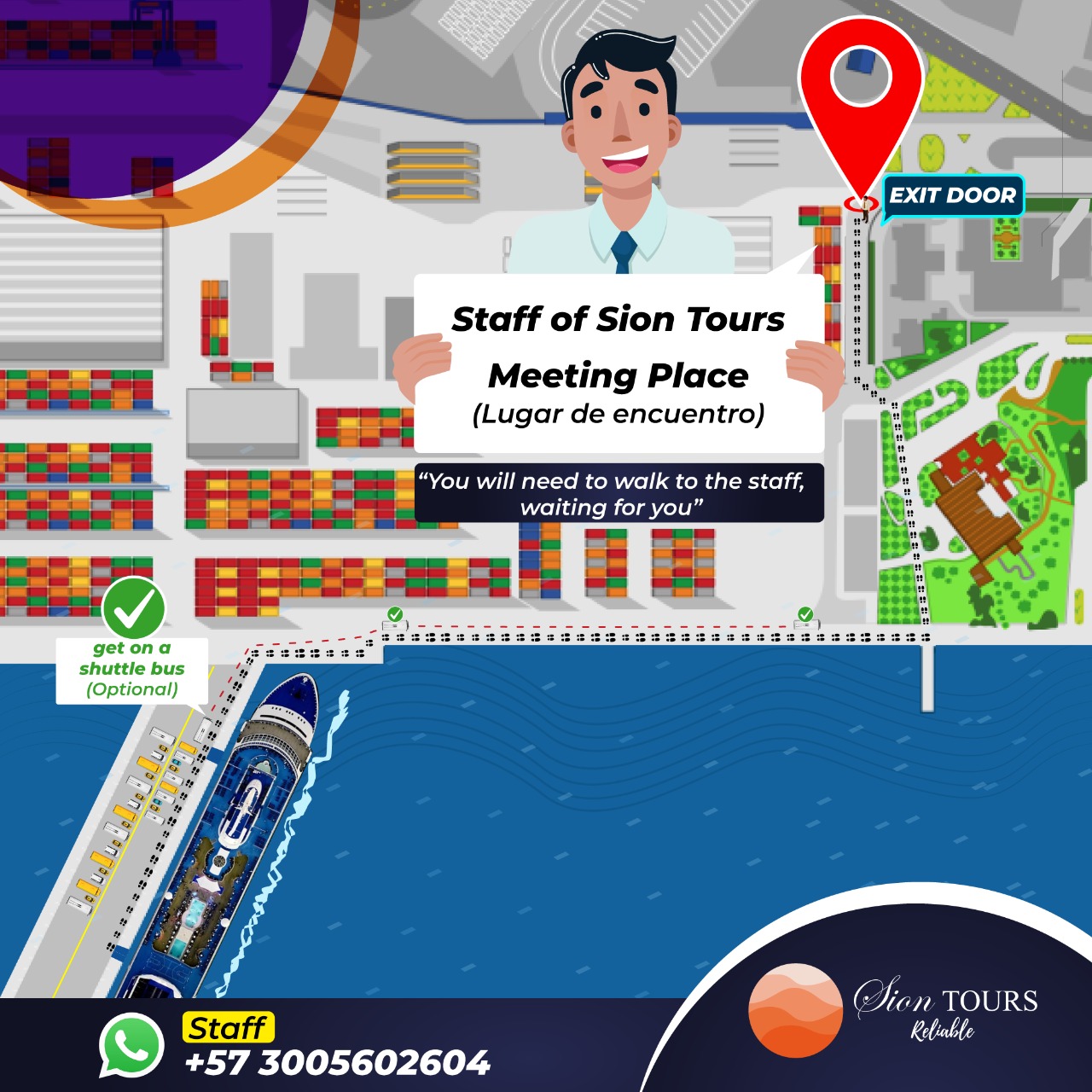
Our ship docked at 7 a.m. on January 1, 2023. We opted to walk along the short section of pier instead of taking one of the shuttle buses. The walk only took a couple of minutes.
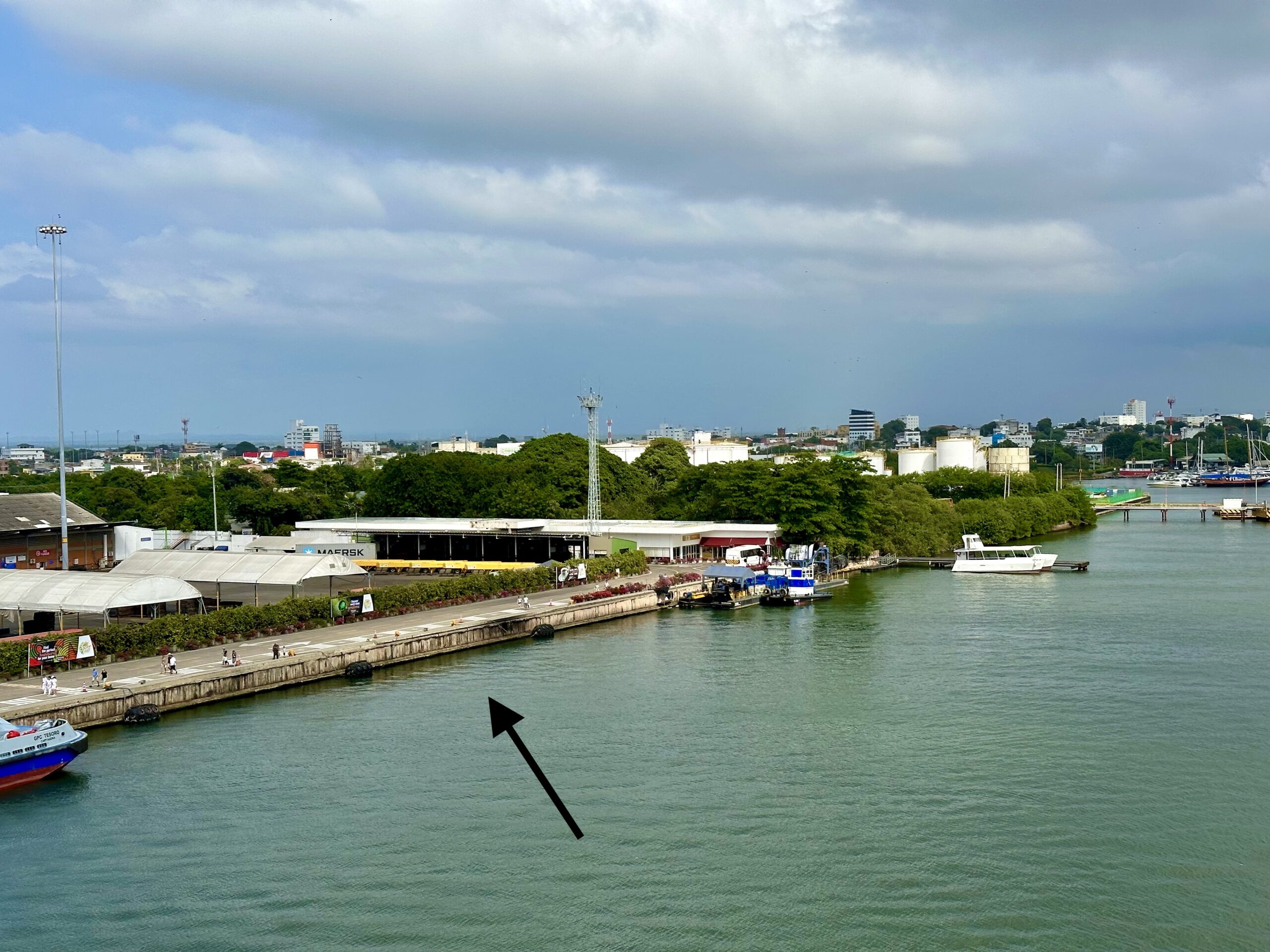
At the end of this pier is the best cruise ship terminal we’ve ever seen.
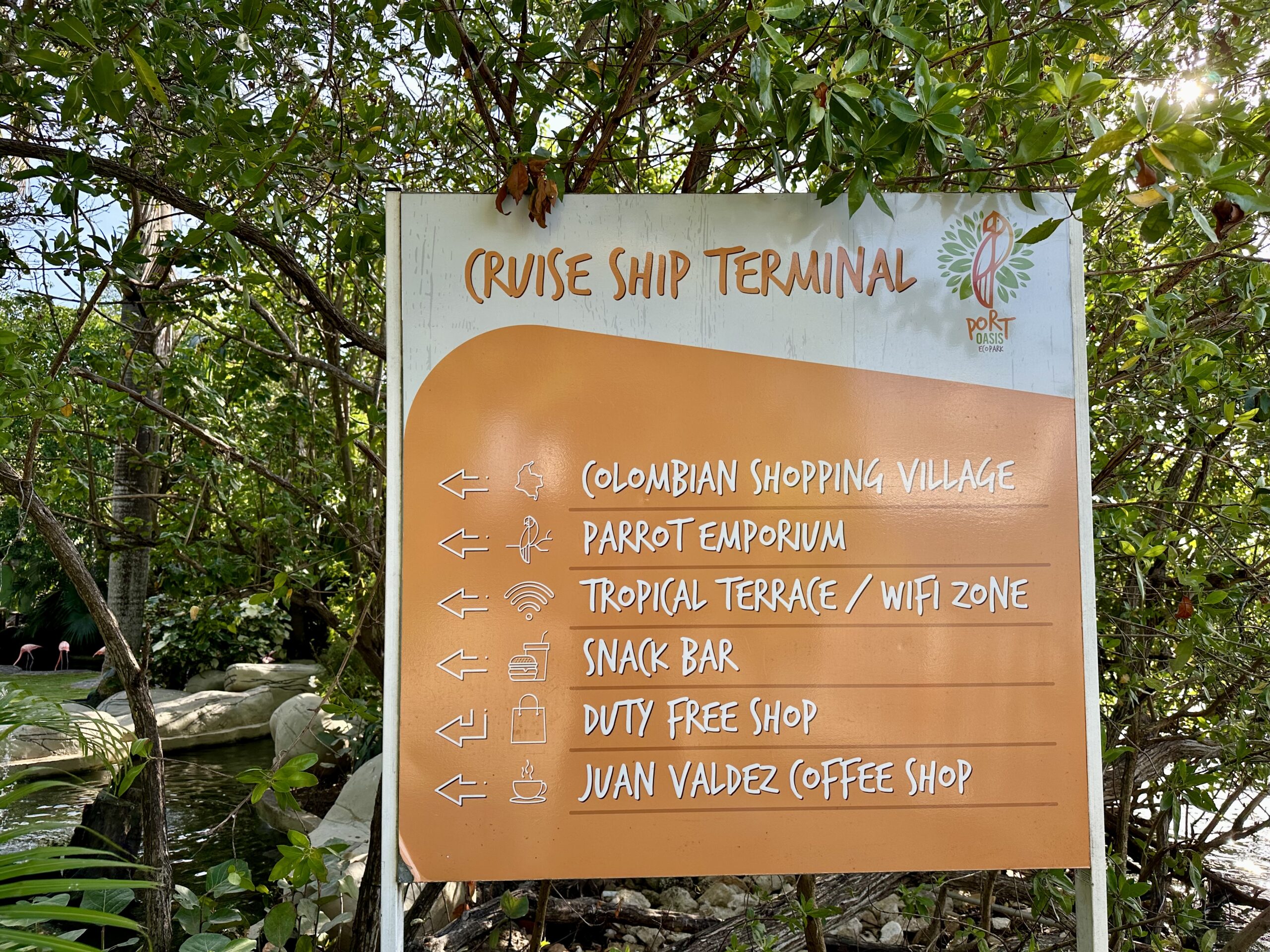
The cruise ship terminal has a small tropical sanctuary filled with so many different birds, a few monkeys and some other animals too. We were told the animals were all free but chose to stay because they were well fed.
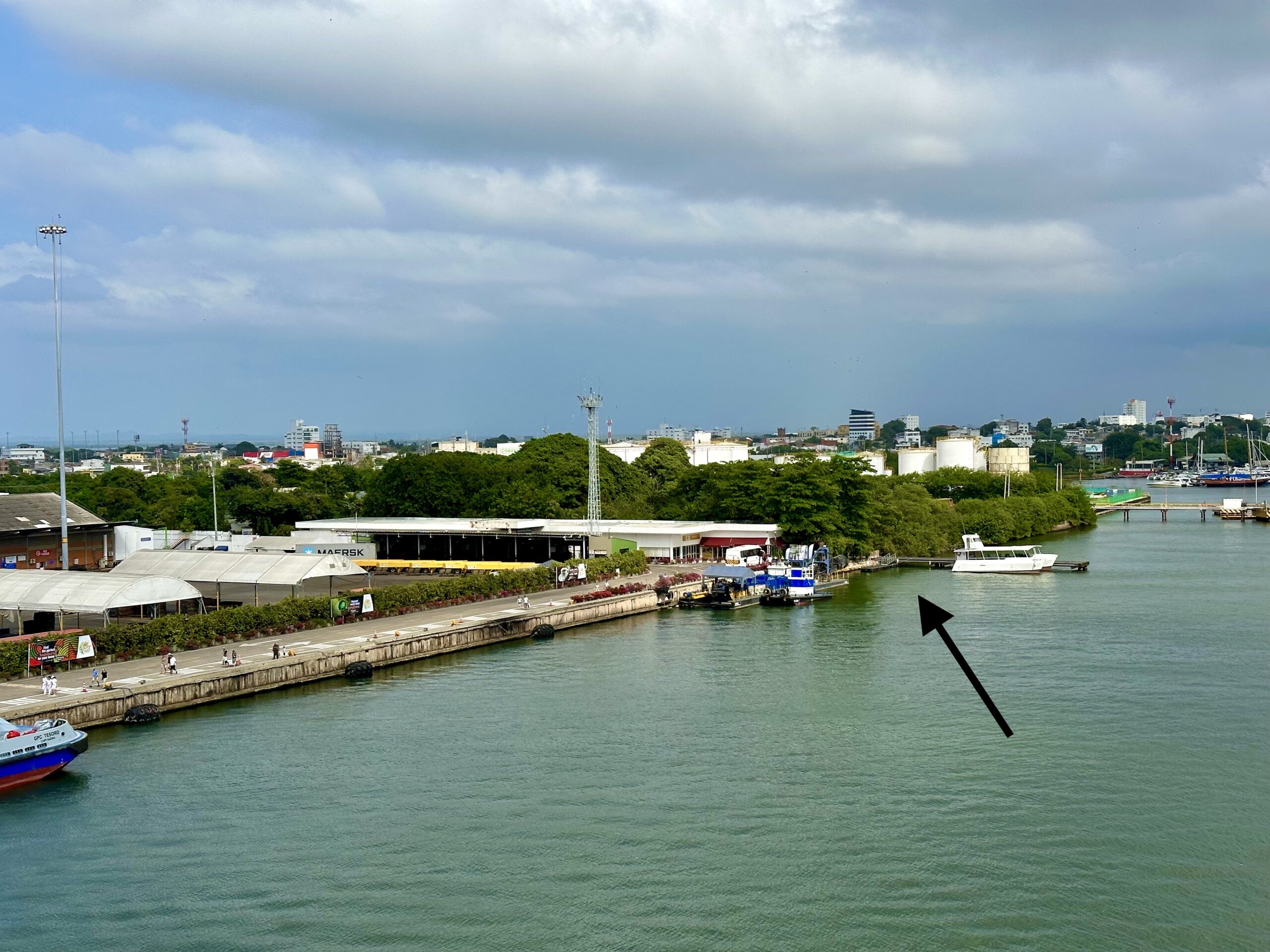
When you first enter the terminal you are greeted by pink flamingos and ducks. As you walk further along you will find yourself sharing the pathways with peacocks. Eventually you will come to an area full of colorful (and loud) parrots.
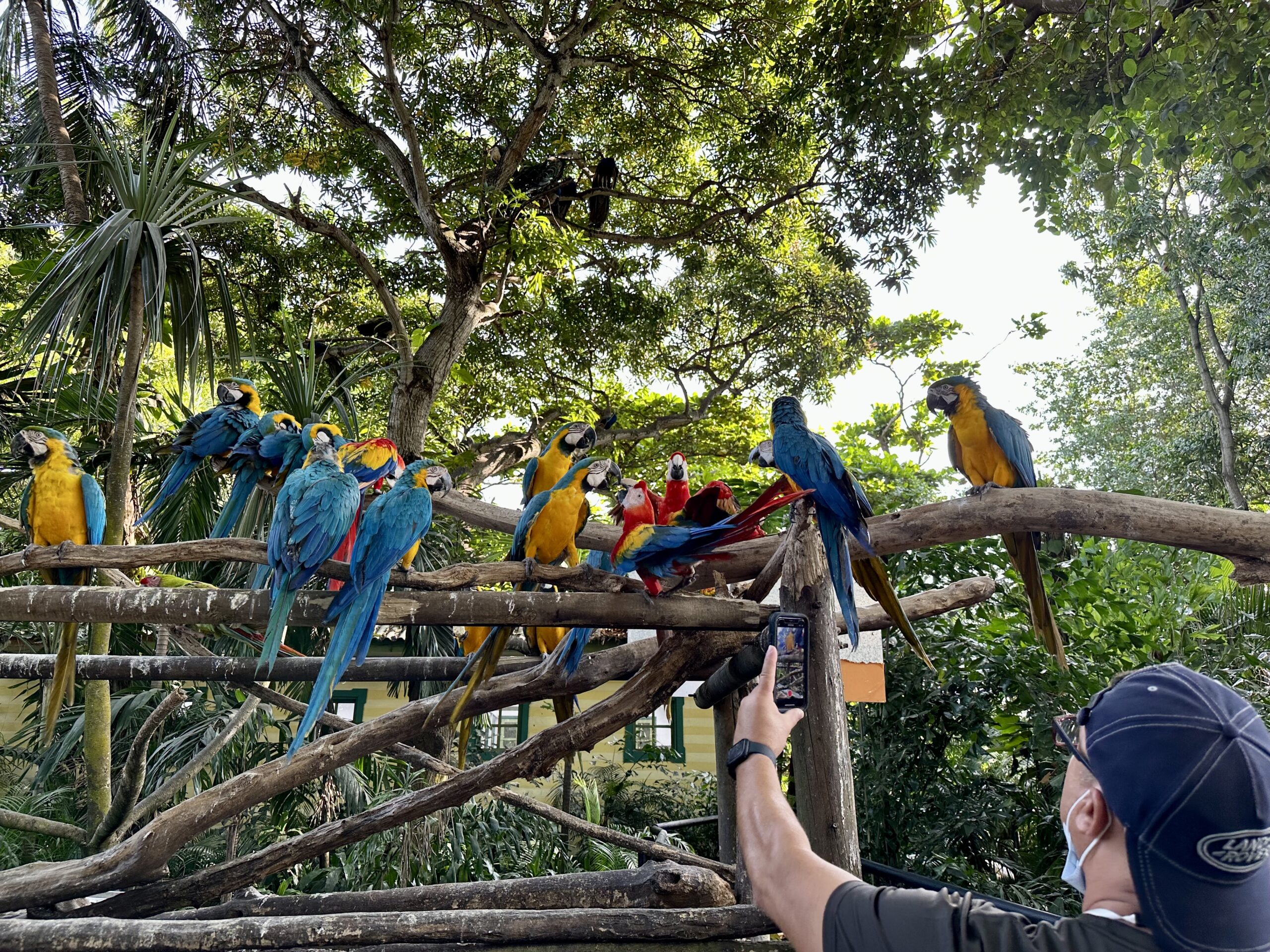
We heard rustling in the tree overhead and looked up to see this guy climbing around. What a crazy experience. And all of this was before we even started our city tour!
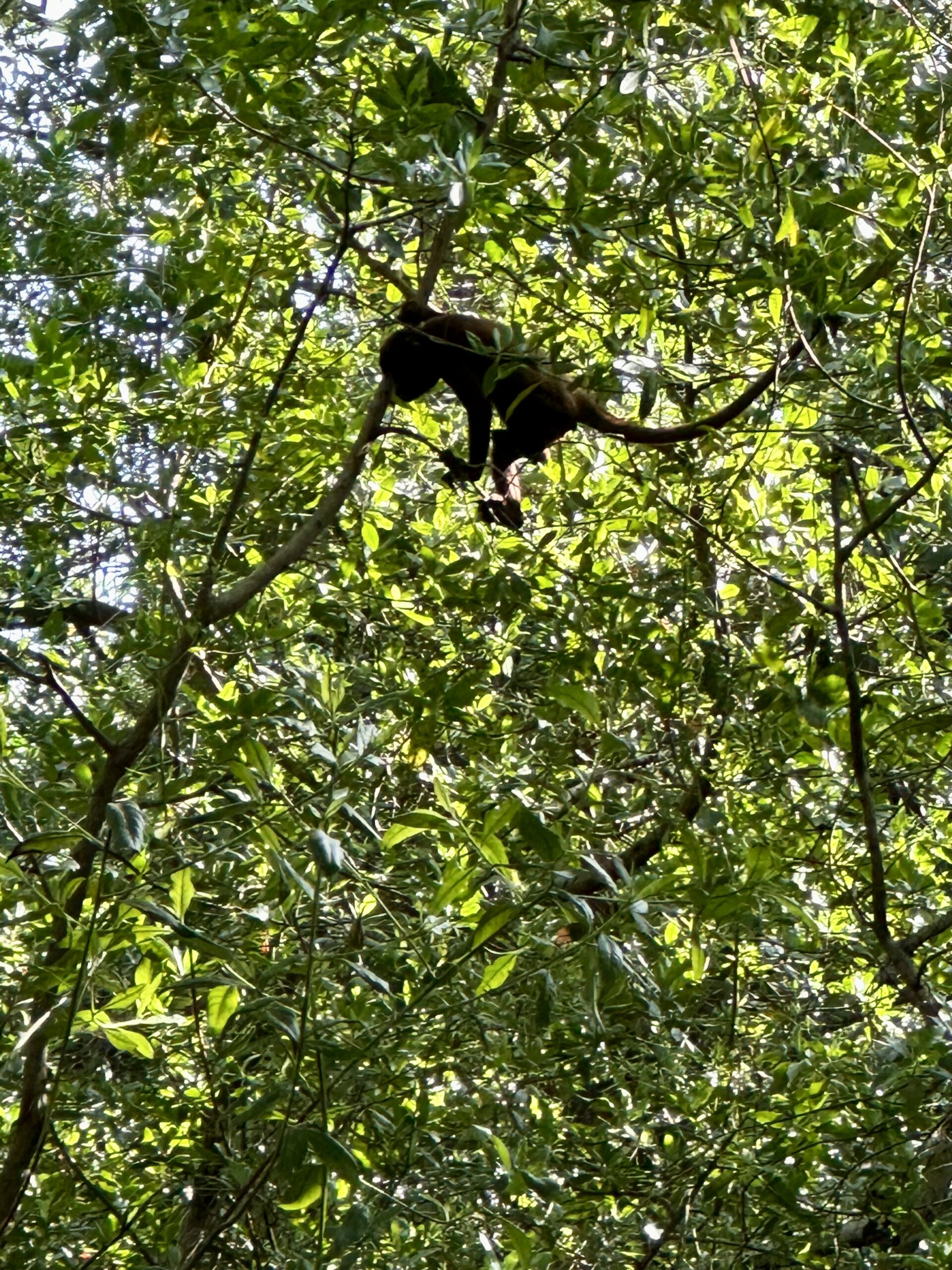
Of course, you will also find the obligatory big sign of your location for the perfect selfie.
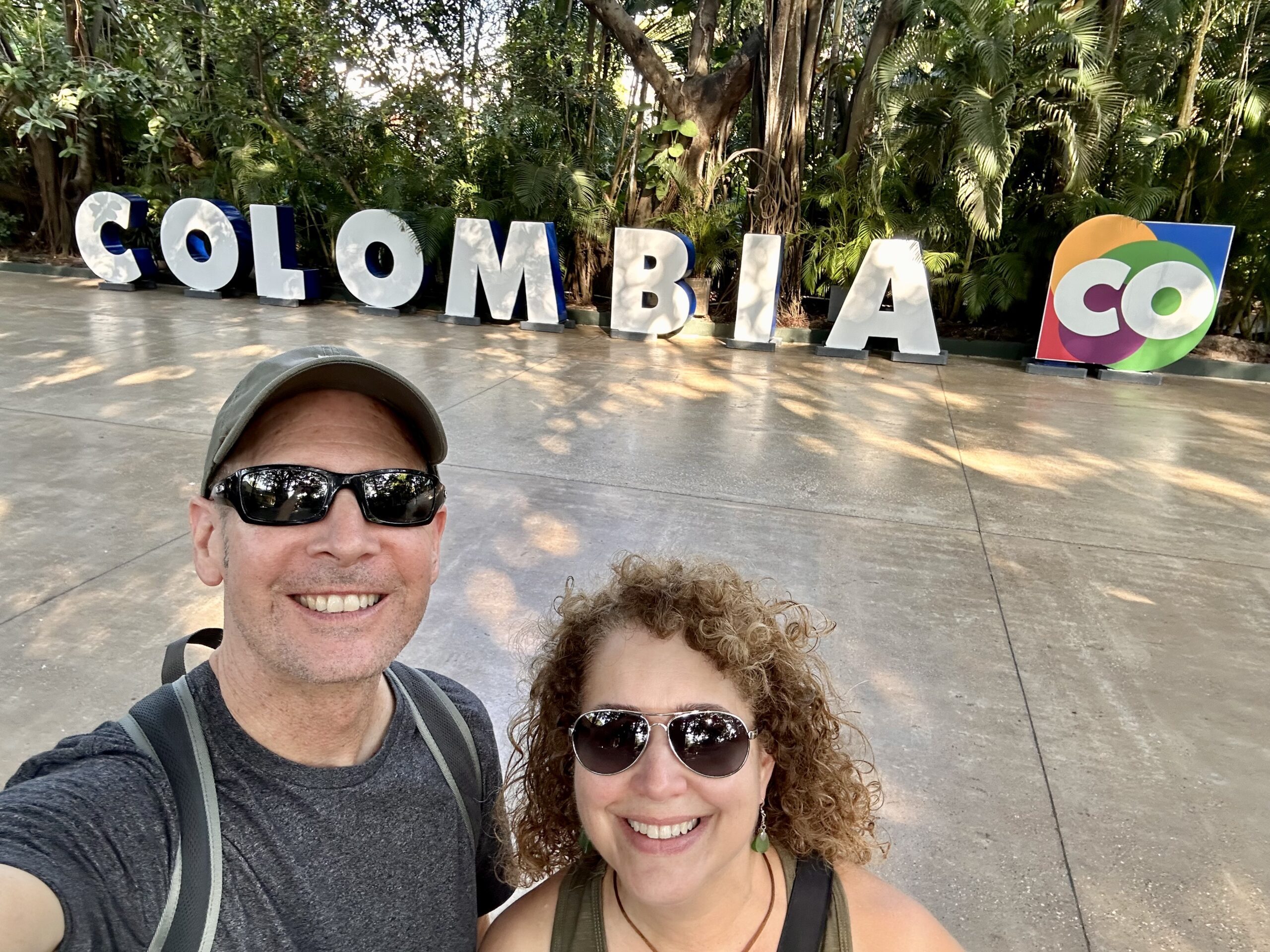
The first stop on our city tour was to Convento de al Popa (the Convent of La Popa) up on top of Mount la Pupa, the highest point in the city. “The religious complex dates back to 1607, when the original wooden chapel and palm of the Popa was erected…A year later, the convent was built…By 1612 the convent was almost finished…The construction took about 6 or 7 years to finish.” – Wikipedia
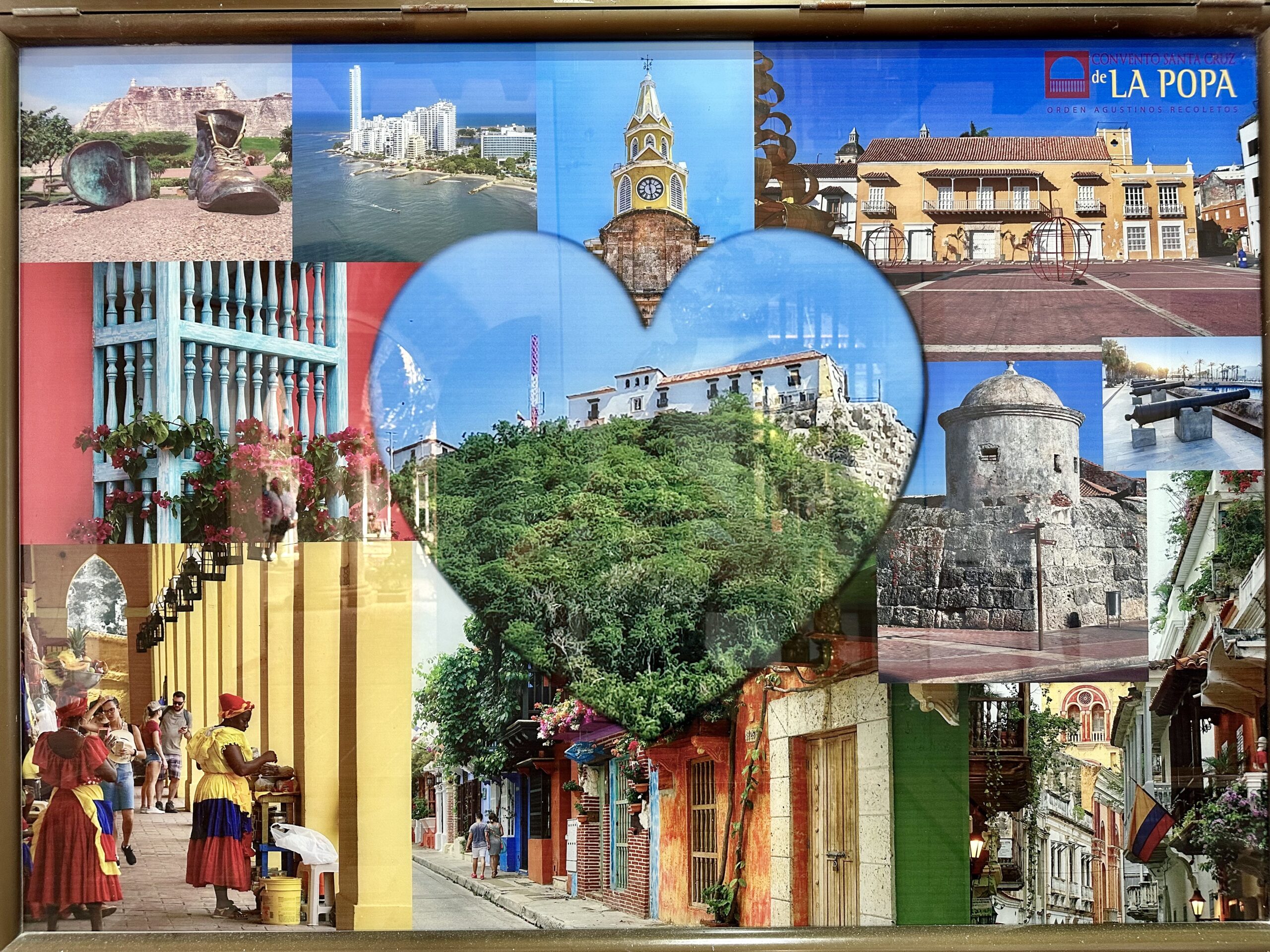
Alberto, our guide, told us legend has it that the Blessed Virgin appeared to a friar and told him to build a church on a hill near Cartagena so that he could return the Christian faith to this land. Legend also says that an evil spirit inhabited the land, in the form of a goat, to which the locals worshiped. The friar fulfilled his mission and threw the goat from the top of the hill. A pretty gruesome story for the start of our day.
We weren’t sure if the legend was true but there was a golden goat statue inside (I’m irritated I didn’t get any pictures of it.) However, the views from the Convento were amazing. You could see the entire city from here.
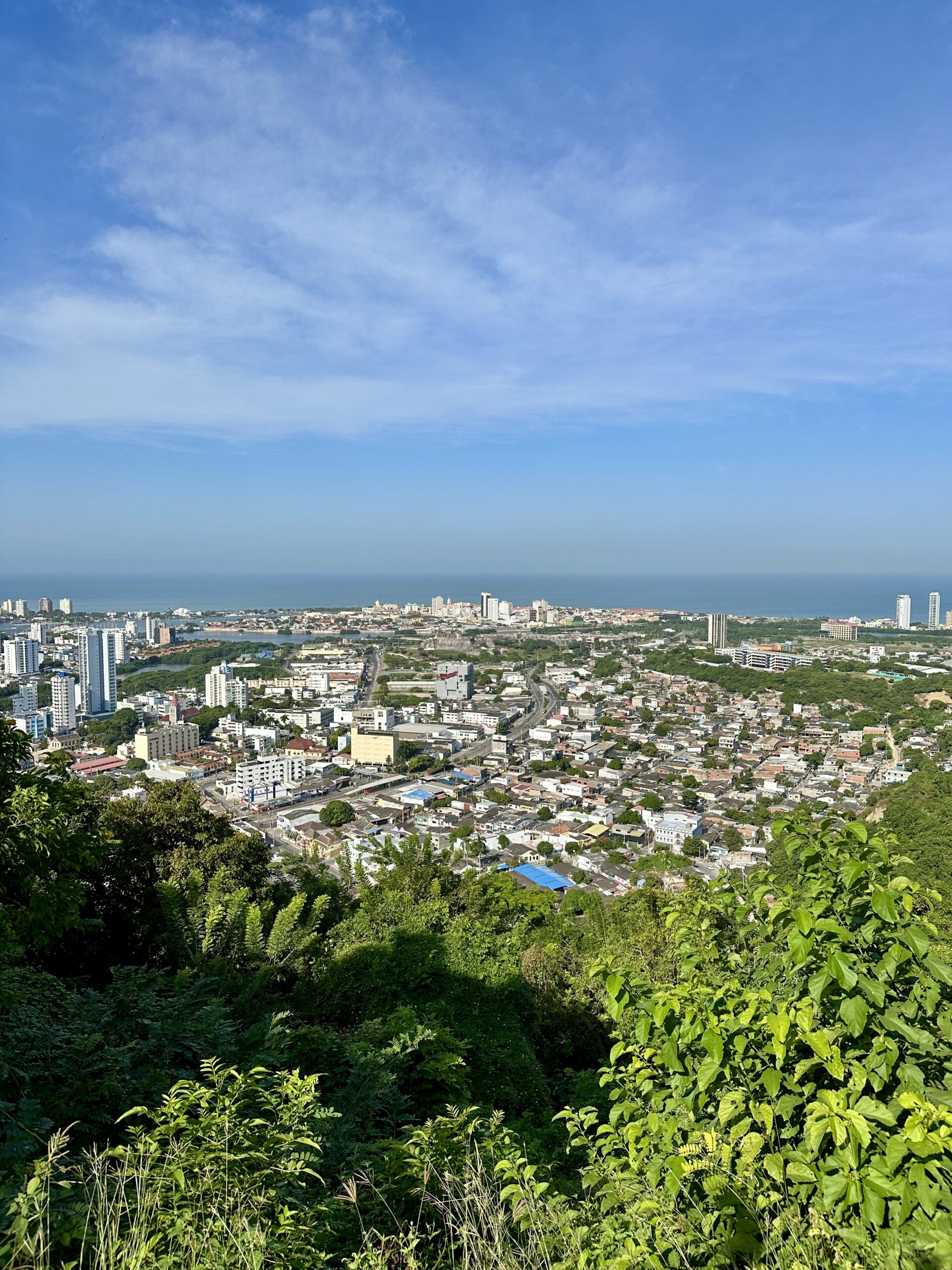
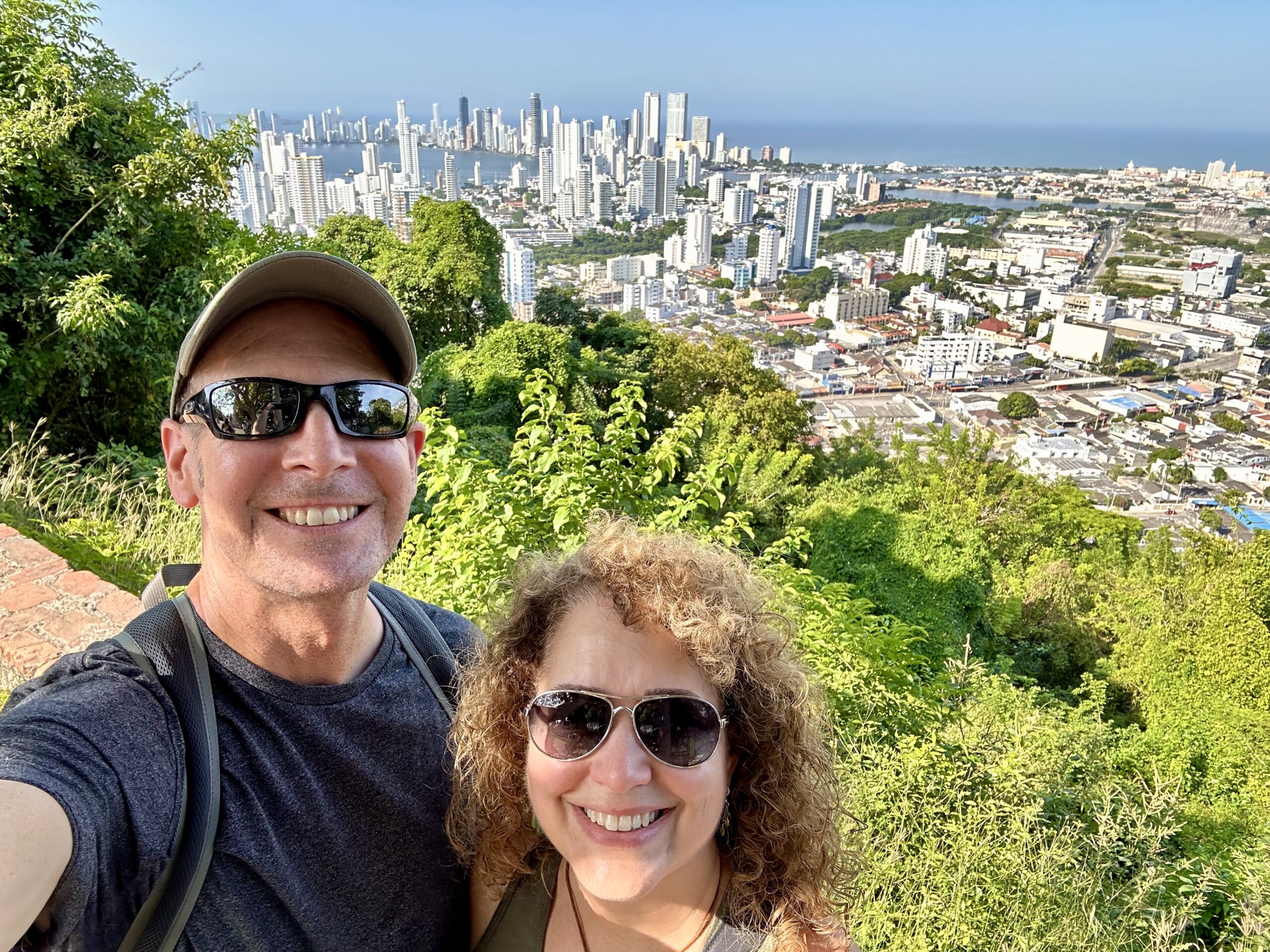
During the War of Independence in 1815, “the Augustinians were forced to leave the convent and it was abandoned until it was used as a barracks.” – Wikipedia
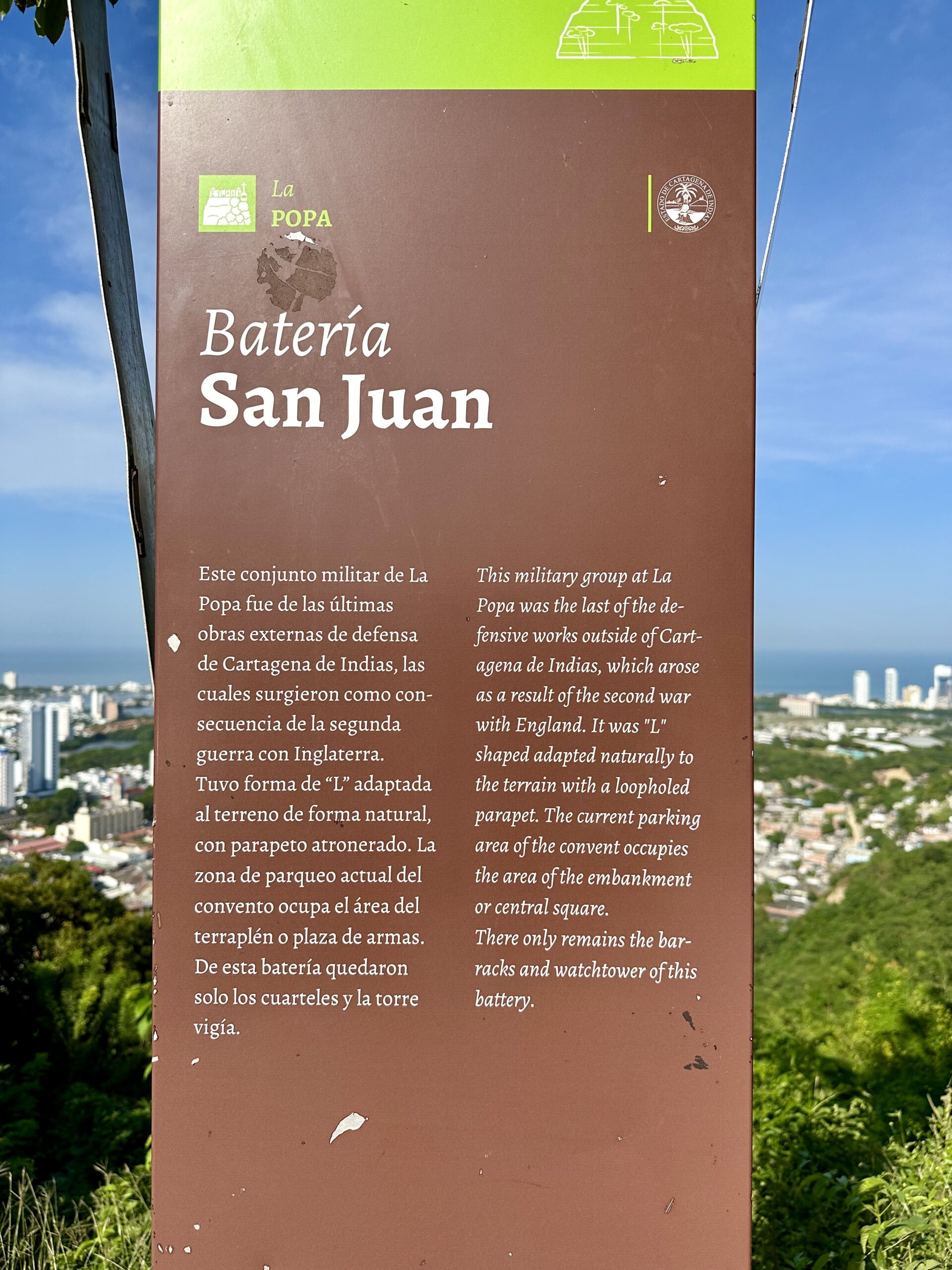
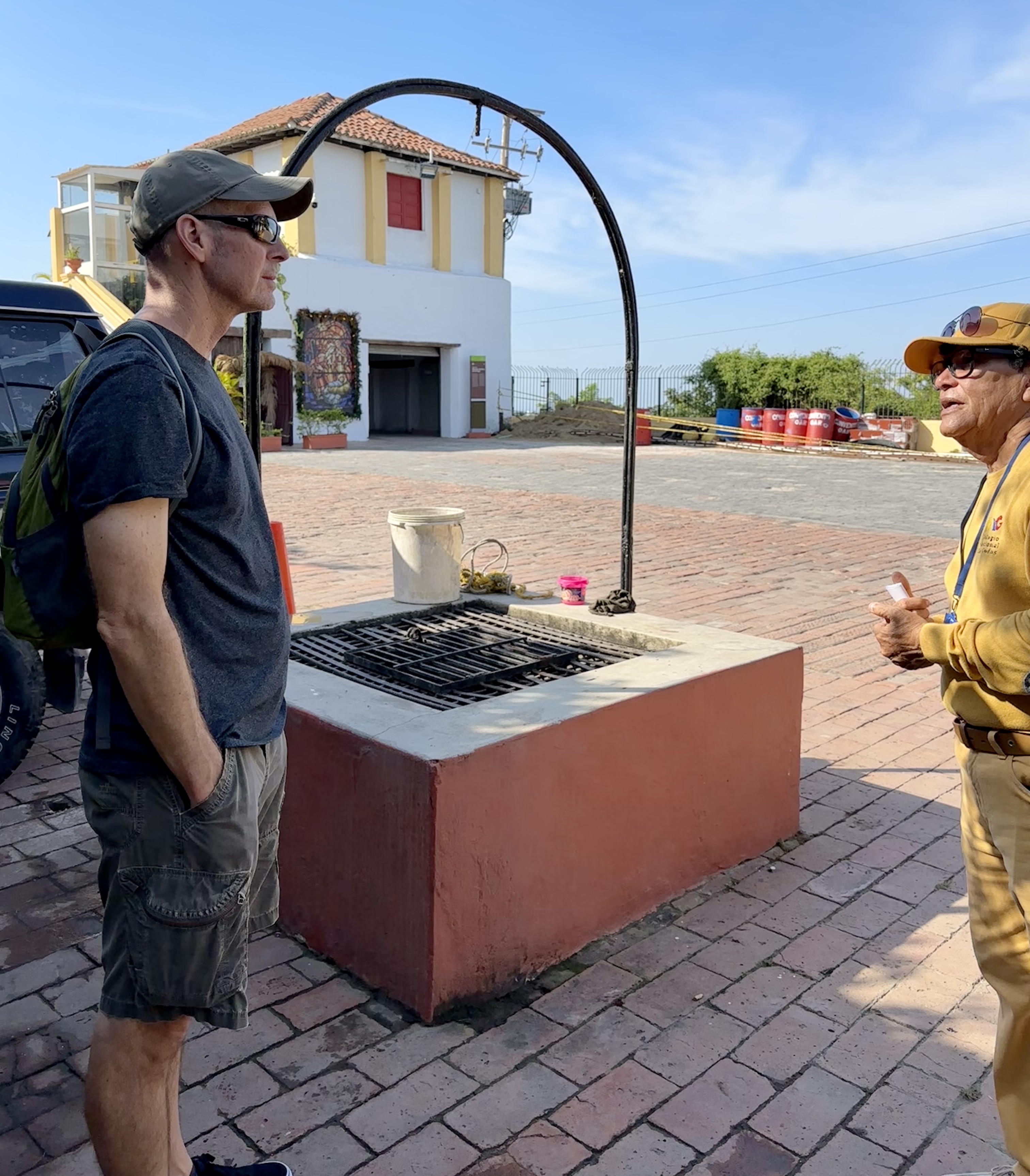
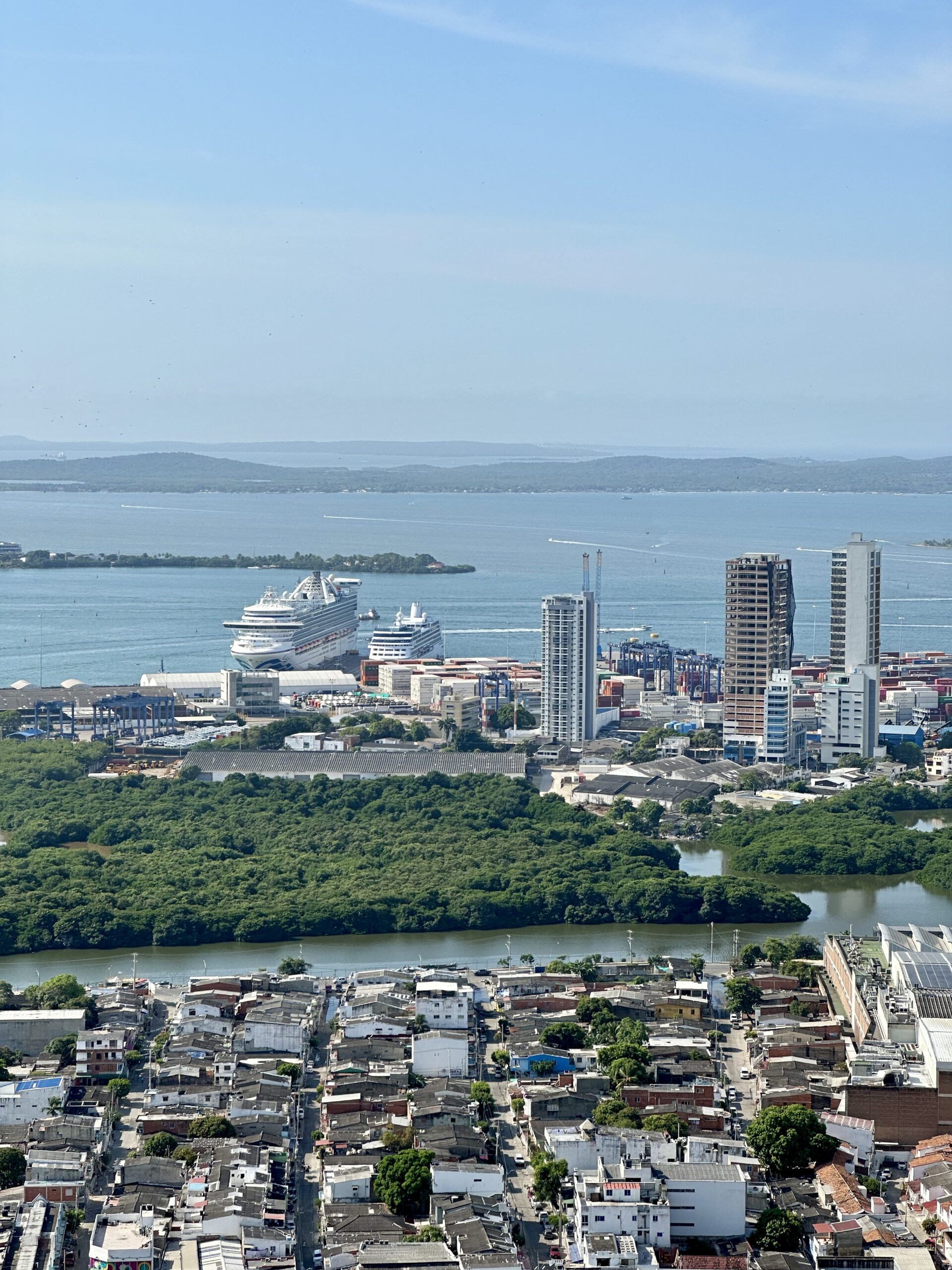
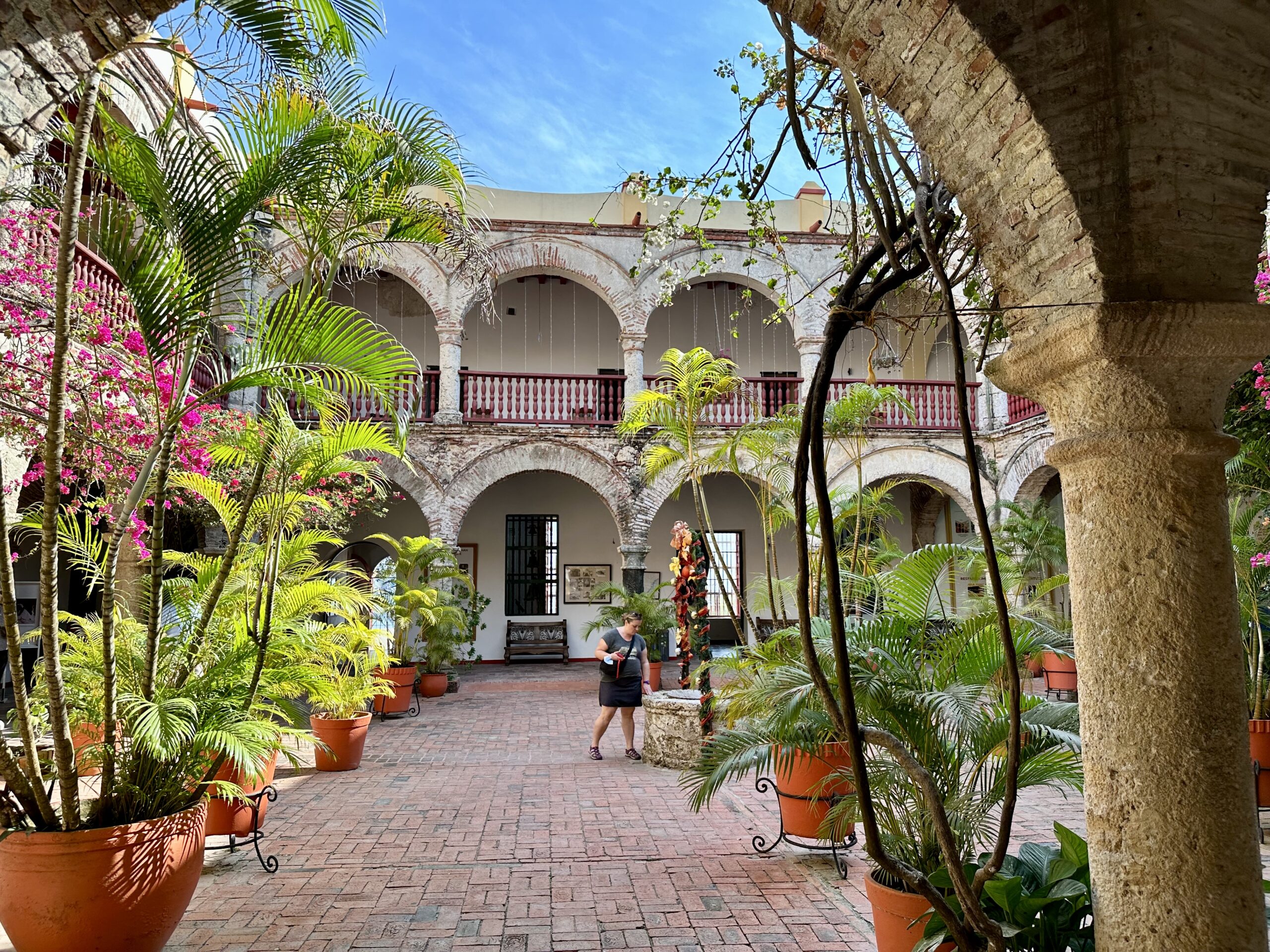
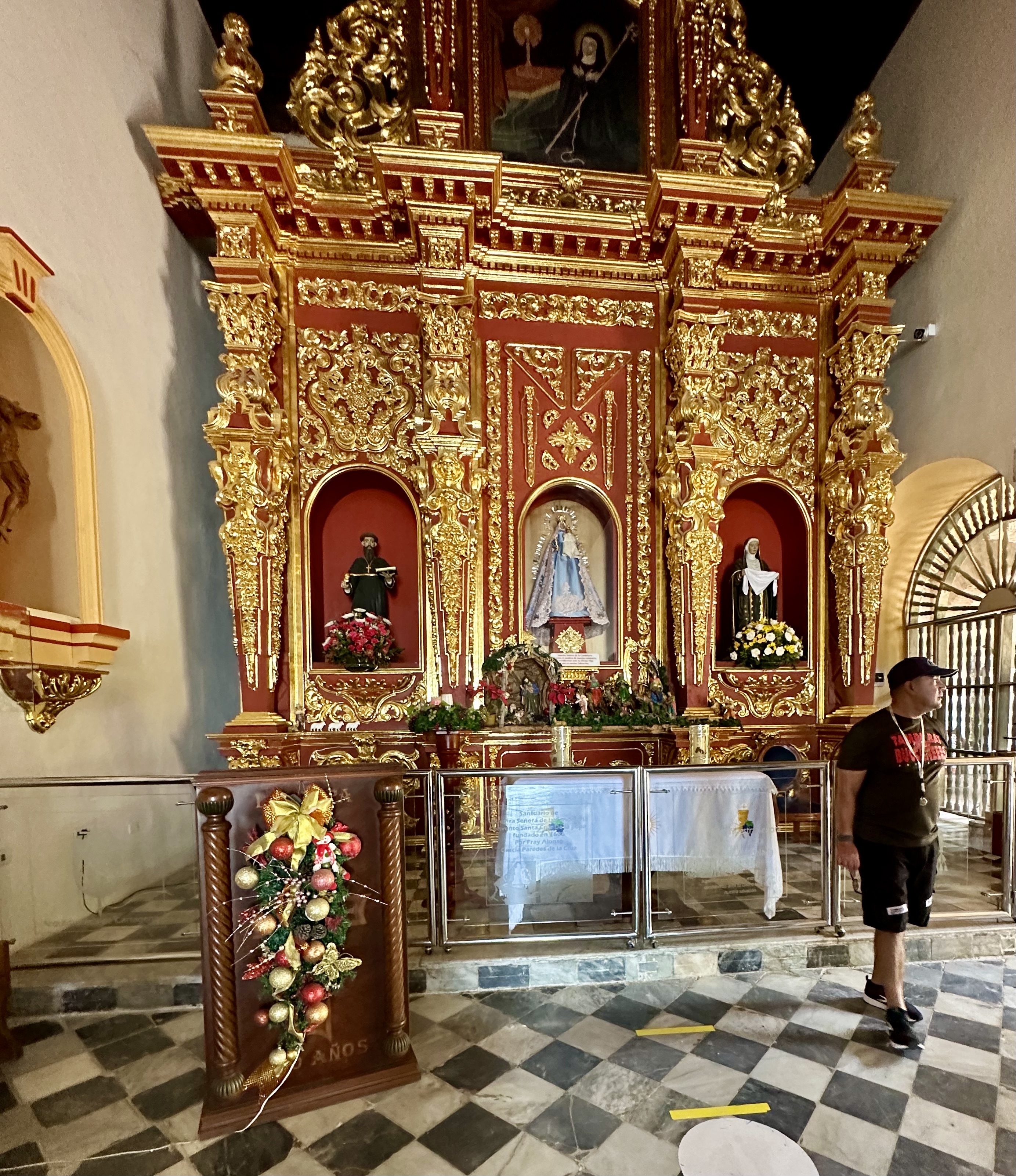
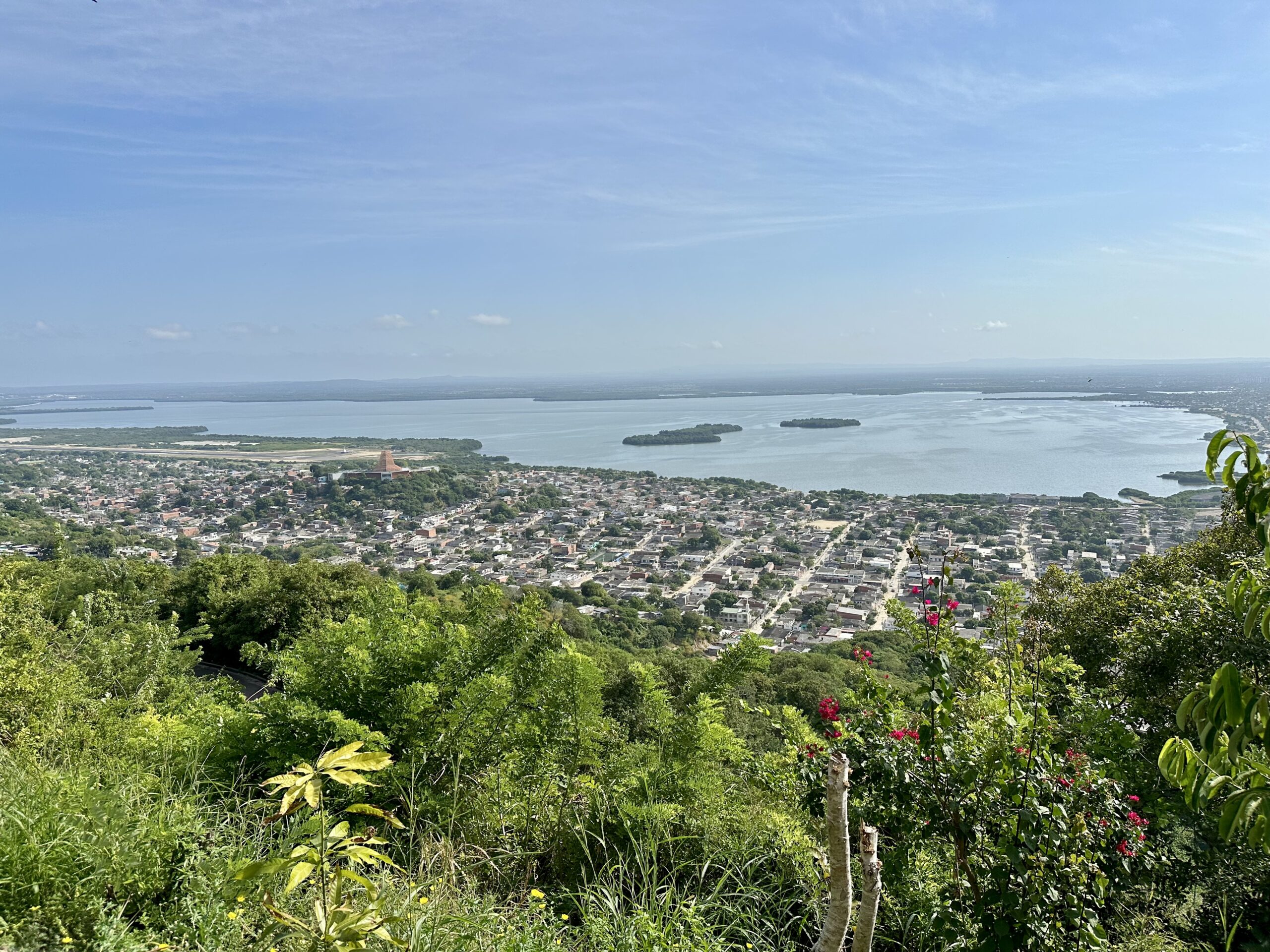
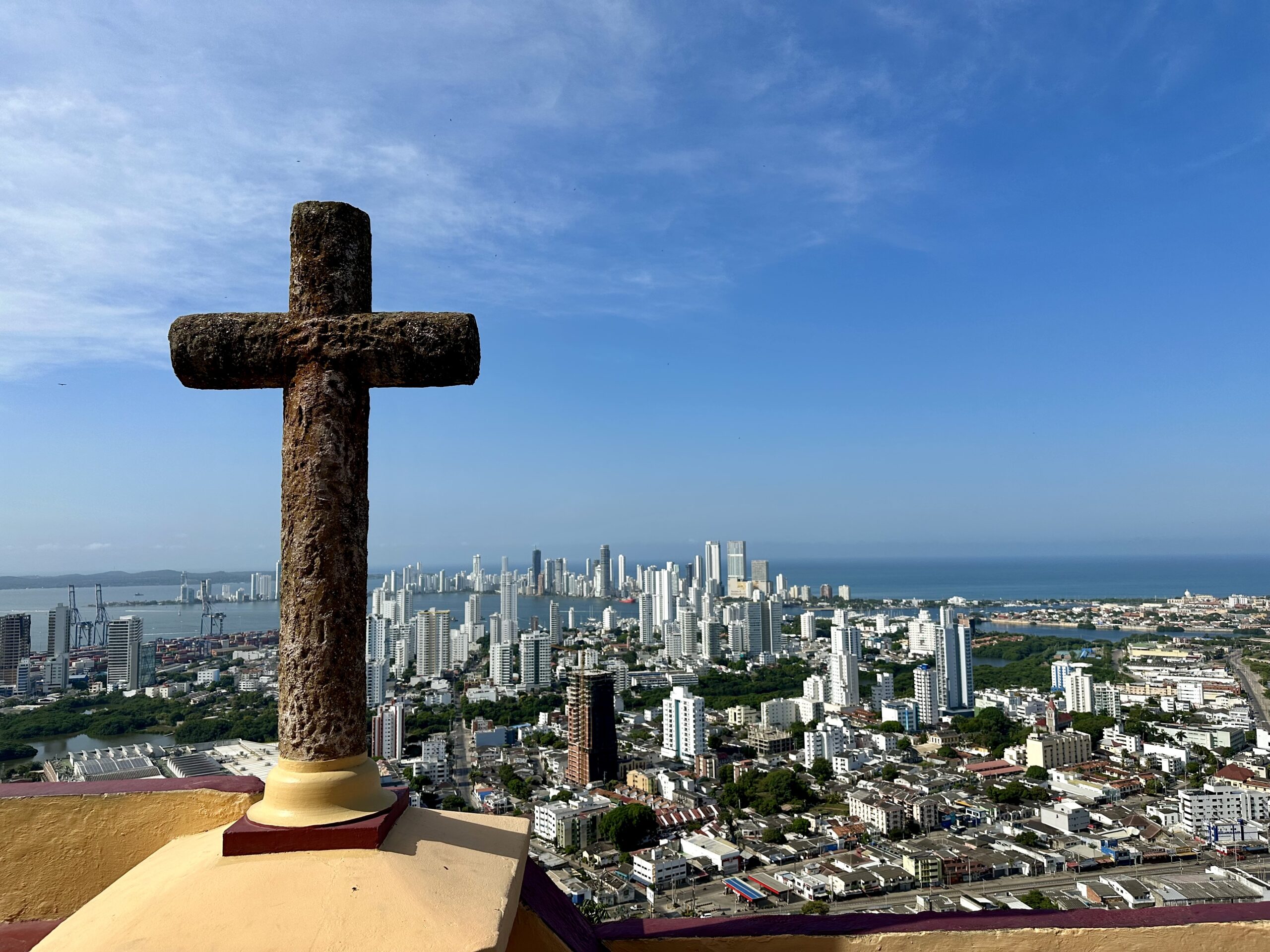
On the way up and down Mount la Popa we saw many white crosses on the side of the road. Alberto told us these were points where the faithful stop to offer prayers during their Easter pilgrimage to the Convento de la Popa. Each year this road is closed for the day so that the faithful can walk the route up and down the mountain.
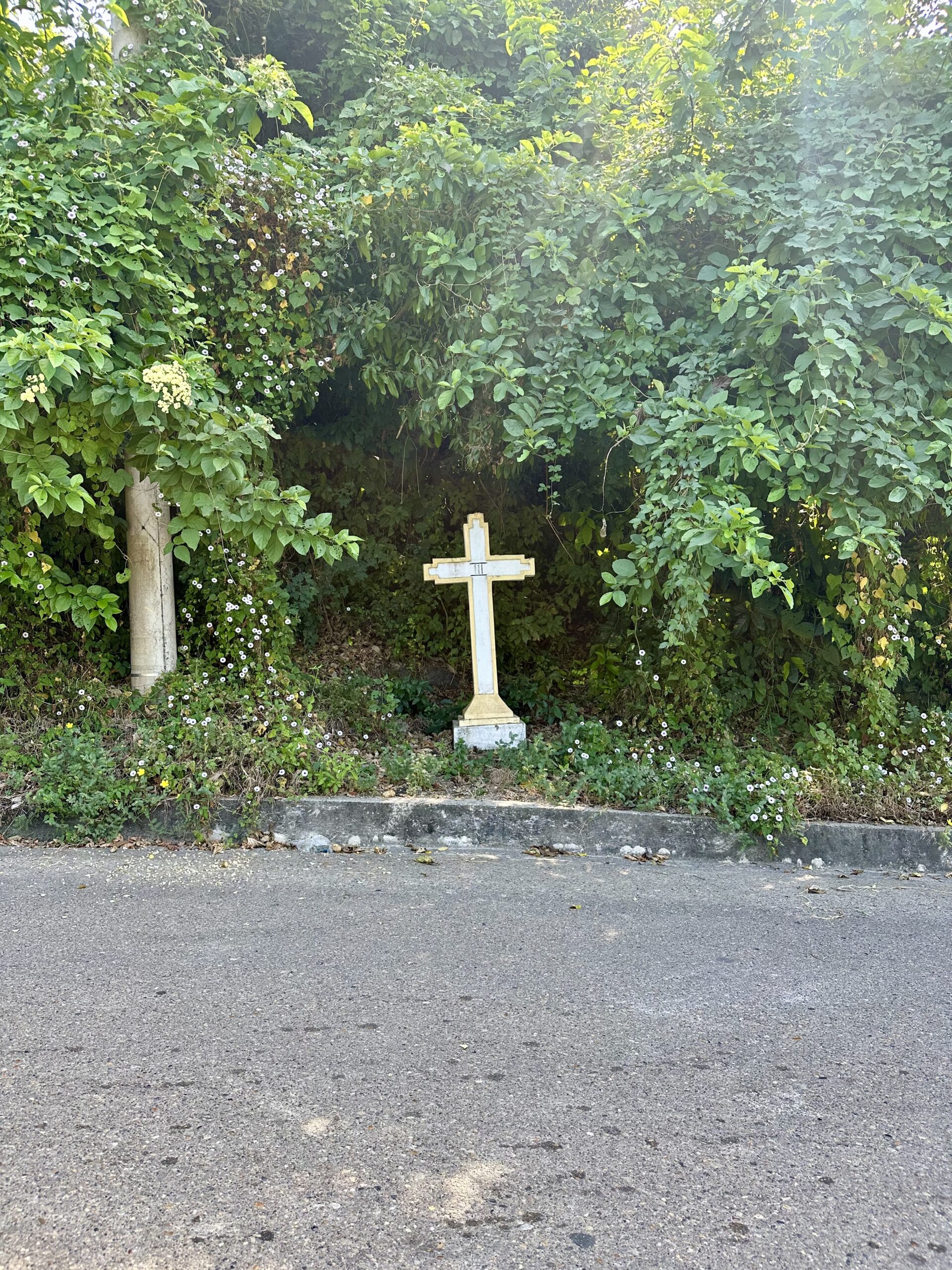
Our second stop of the day was the Castle San Felipe de Barajas, a fortress within the city. “The castle was built in 1536 and is located on the Hill of San Lázaro in a strategic location, dominating approaches to the city by land or sea.” – Wikipedia
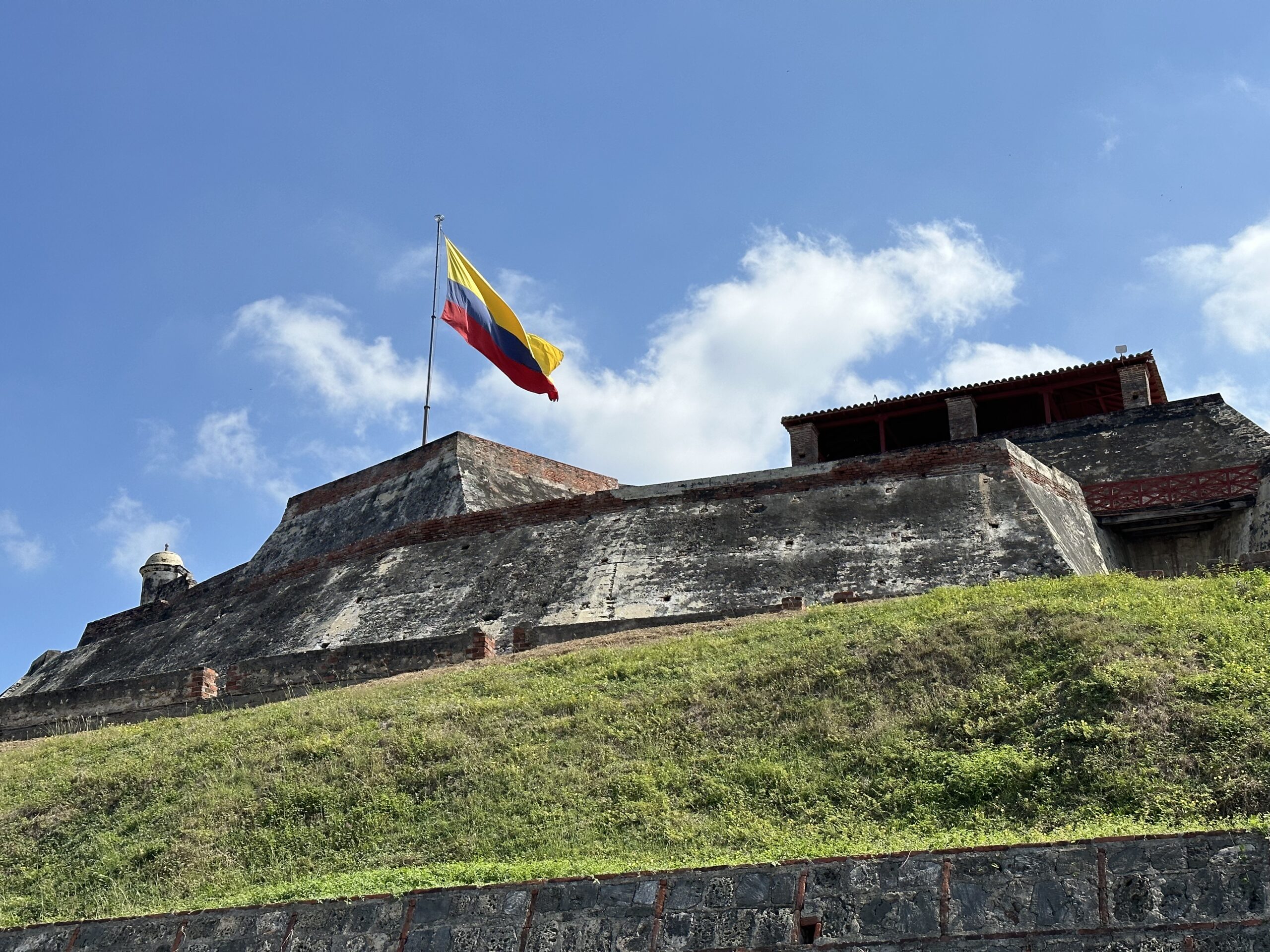
“A complex of battlements, bunkers, and tunnels, the Castillo de San Felipe is regarded as one of the most formidable examples of Spanish military architecture.” – Frommer’s
“The fortification consists of a series of walls, wide at the base and narrow toward the parapet, forming a formidable pattern of bunkers. The batteries and parapets protect one another, so making it practically impossible to take a battery without taking the whole defence system.” – Wikipedia
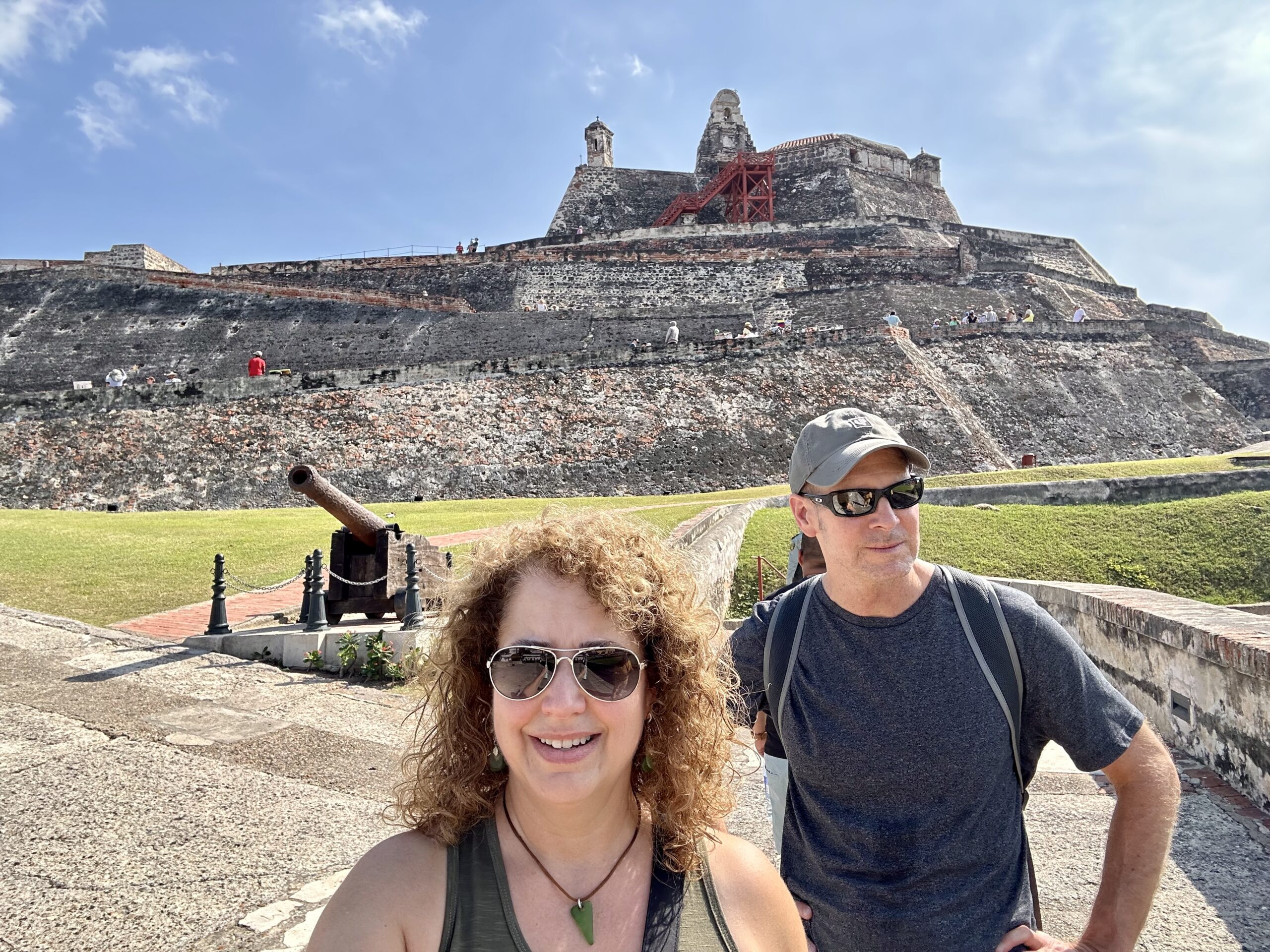
Alberto pointed out that the entire fort was built using coral and rock from the nearby beaches.
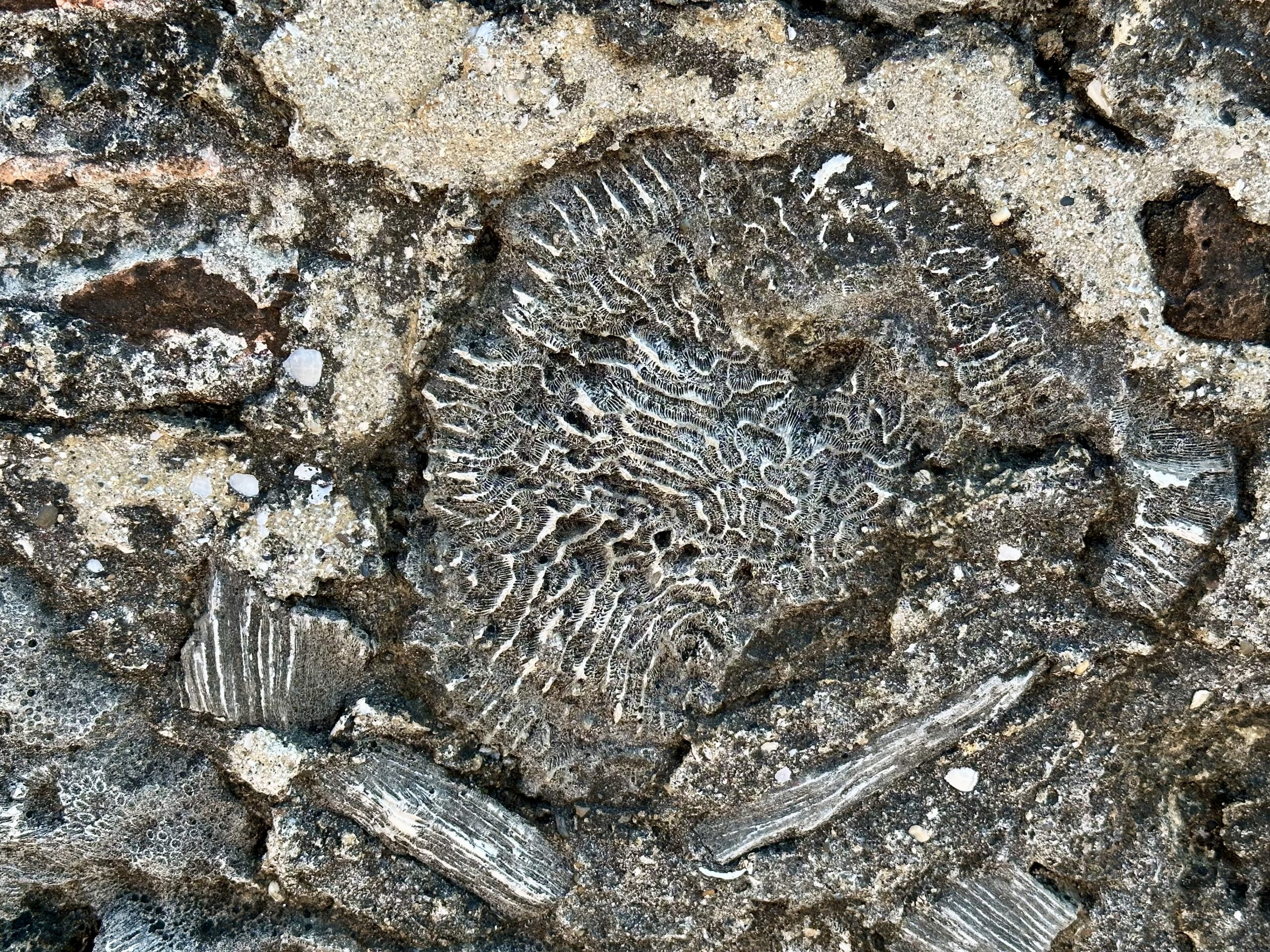
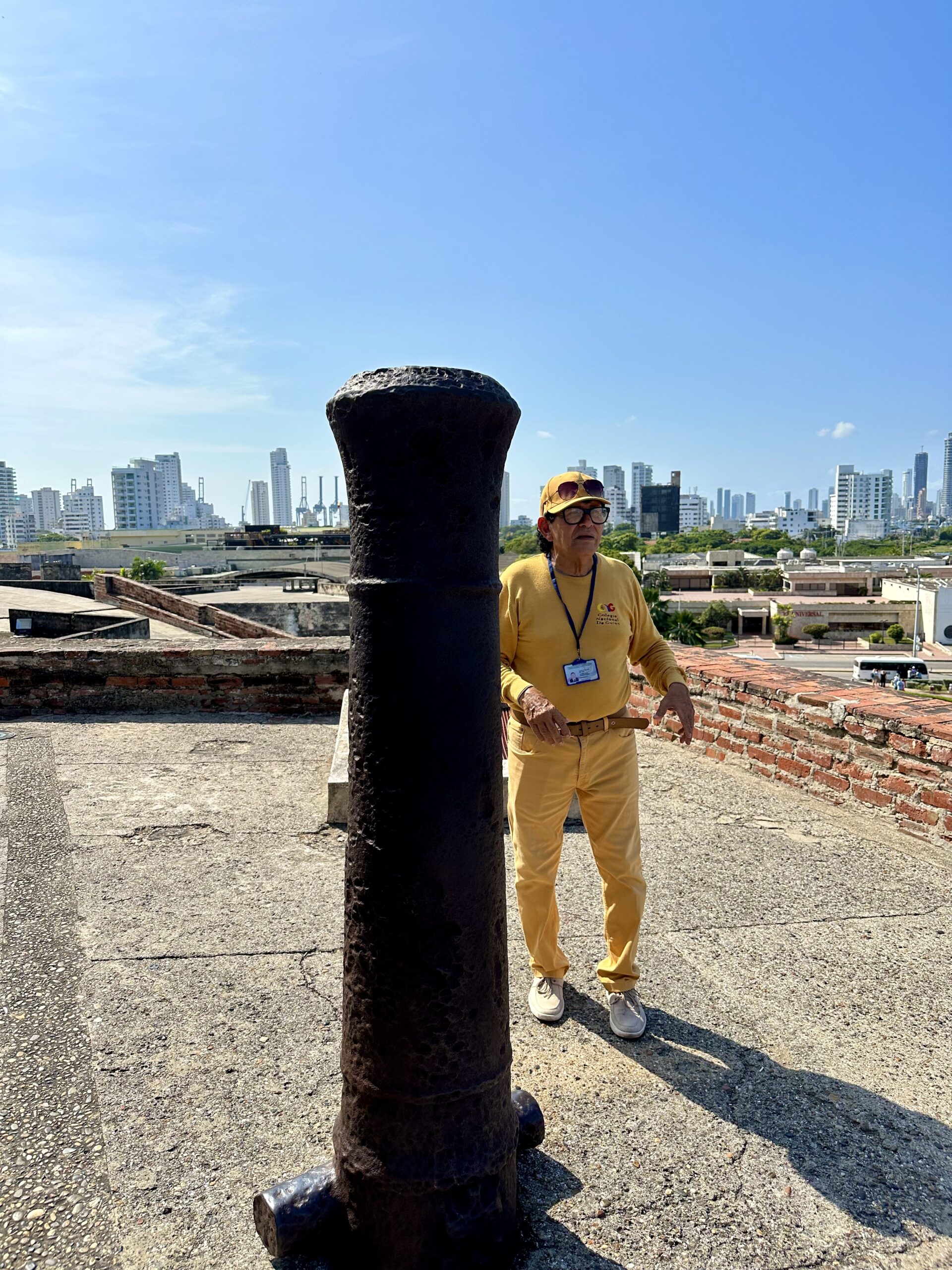
The Castle was also built with drawbridges to stop any invasions. The drawbridges have been converted into permanent walkways today.
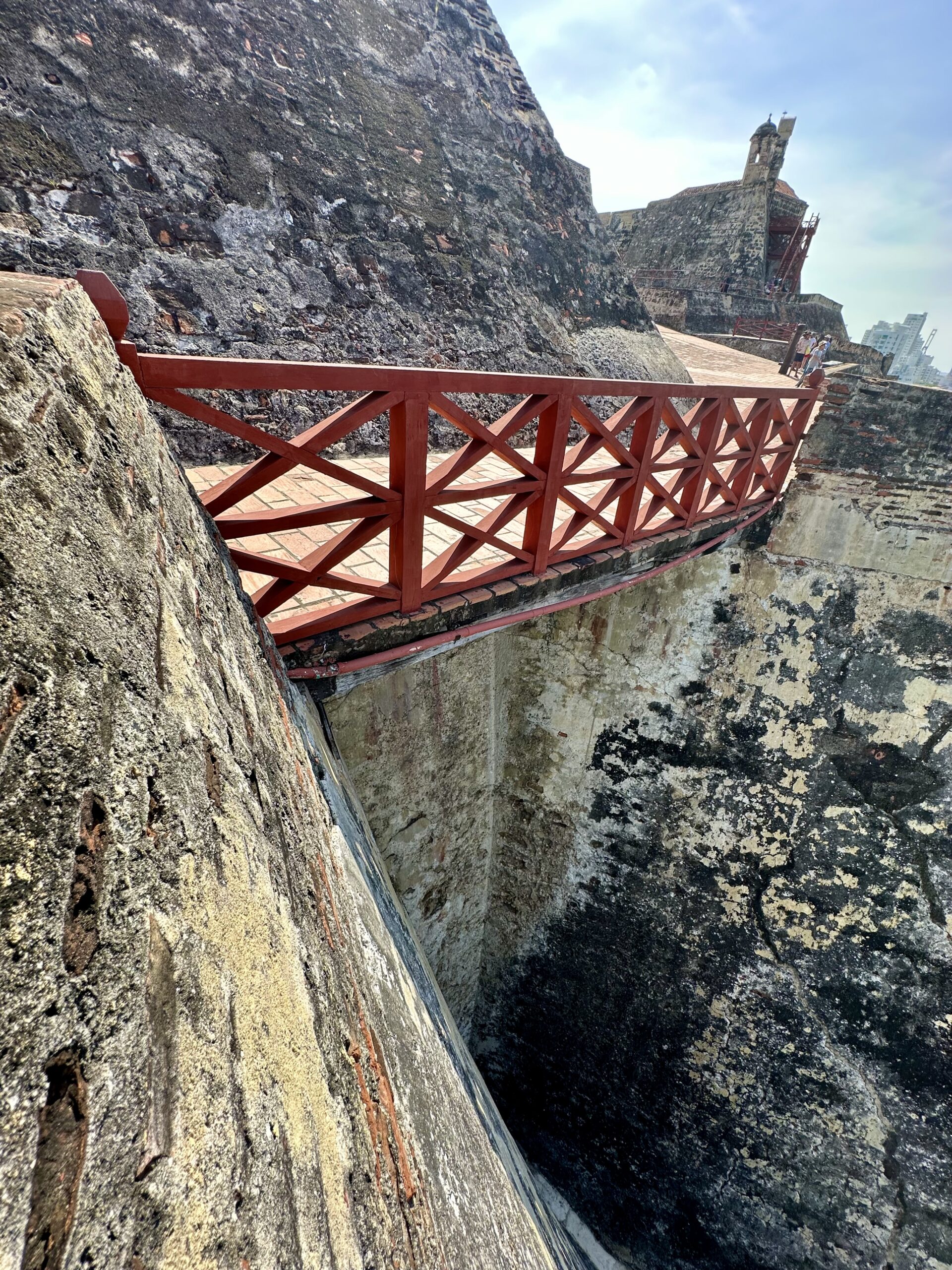
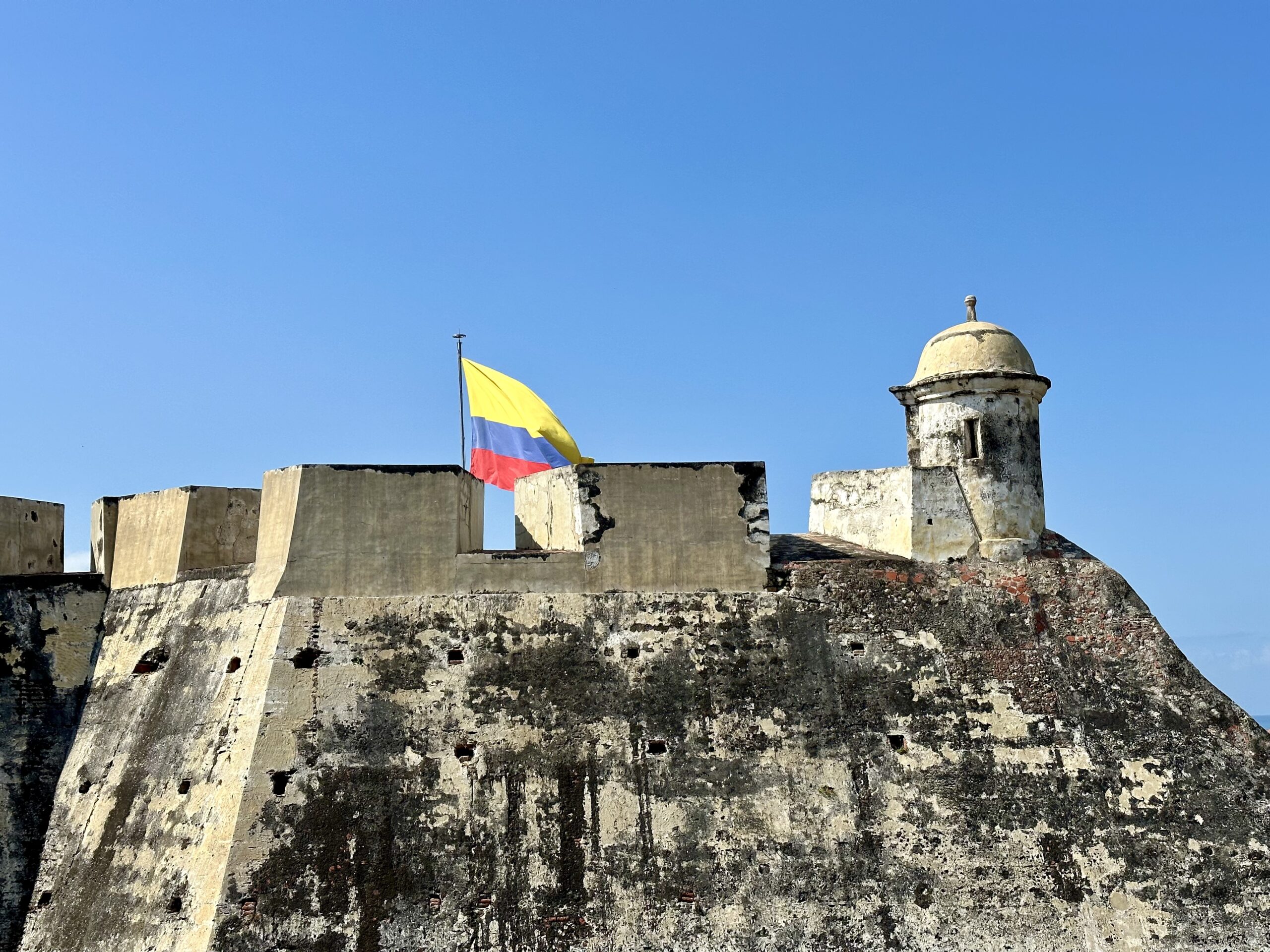
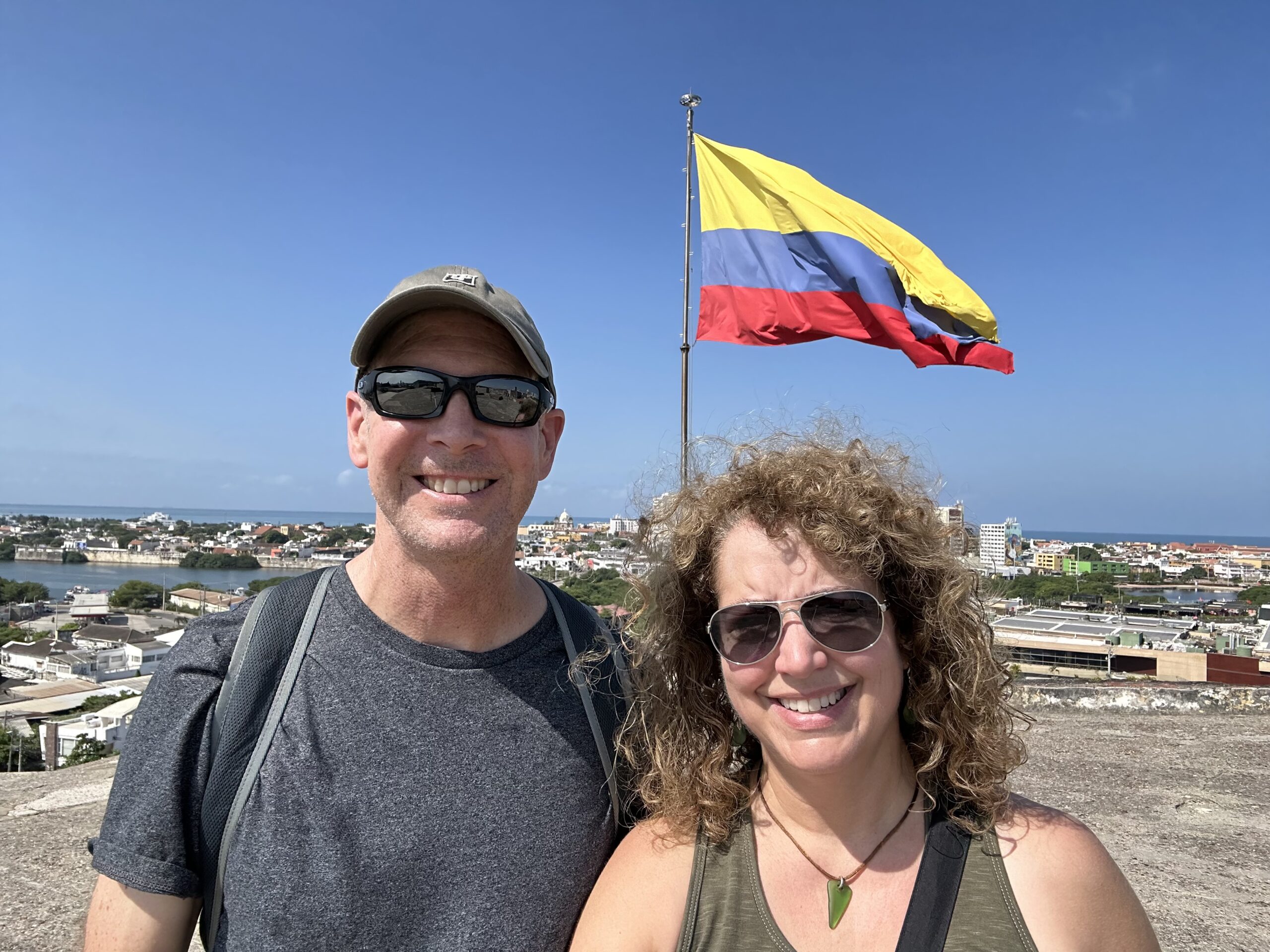
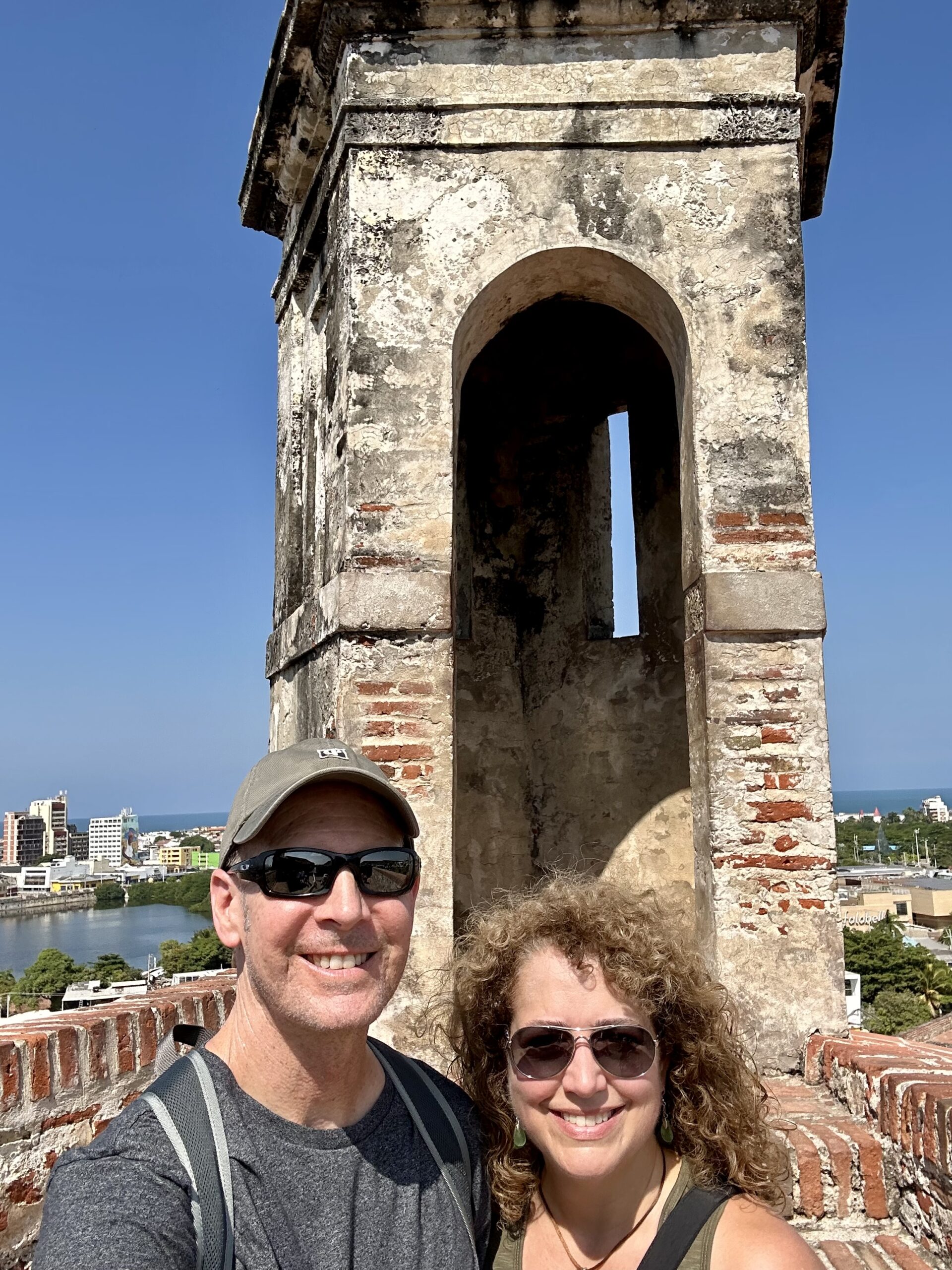
“The castle is striking for its grand entrance and its complex maze of tunnels…The main underground gallery runs along the perimeter of the complex at sea level. Chambers within it could be exploded preventing the advance of overhead attackers…The tunnels were all constructed in such a way as to make it possible to hear footsteps of an approaching enemy.” – Wikipedia
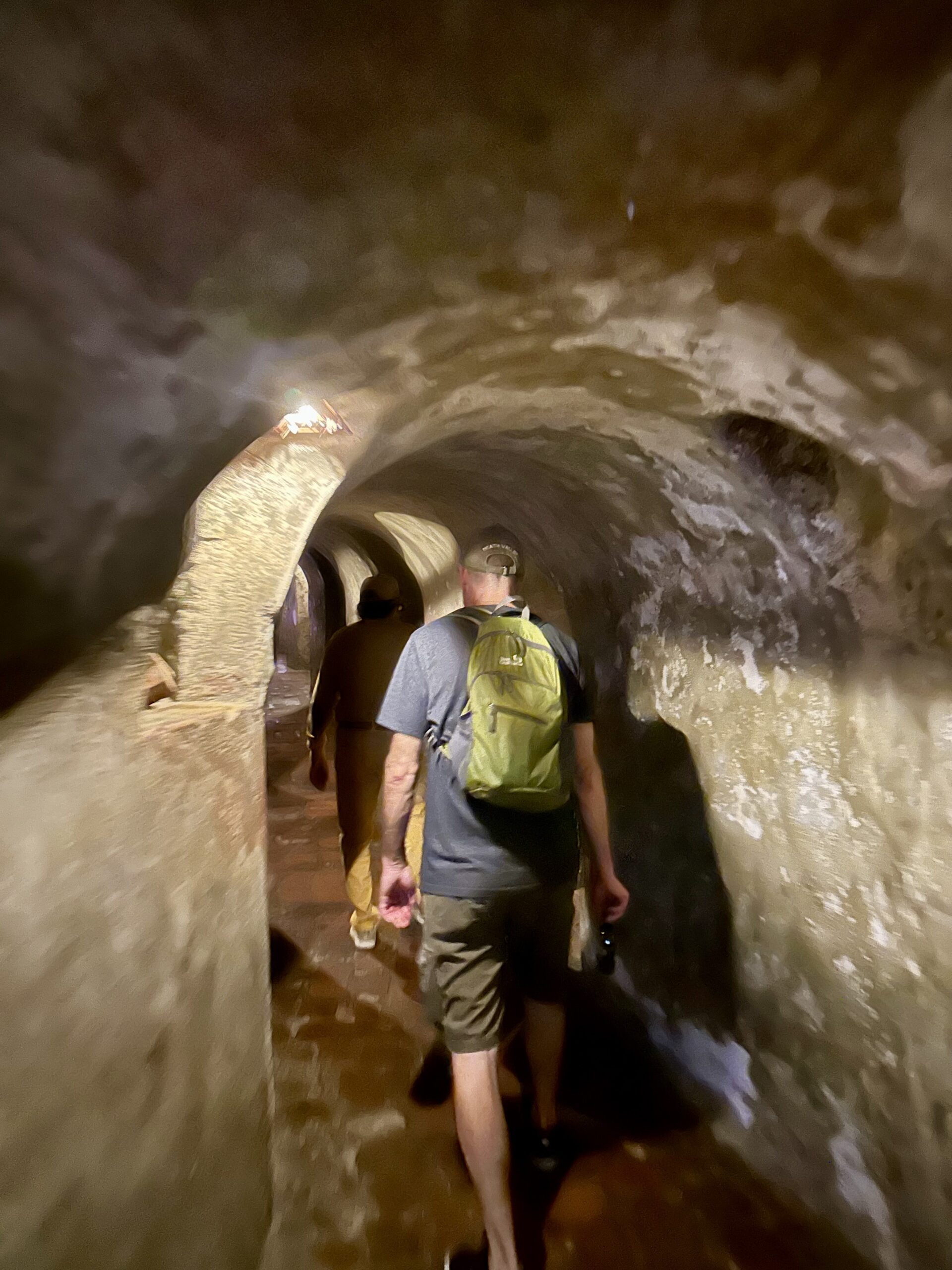
Our next stop was to Cartagena’s Old City. “Cartagena’s Old City is its principal attraction, particularly the inner walled town, consisting of the historical districts of El Centro and San Diego. It’s one of finest examples of preserved colonial architecture in the Americas, packed with churches, monasteries, plazas, palaces and mansions with their famous overhanging balconies and shady patios.” – Lonely Planet
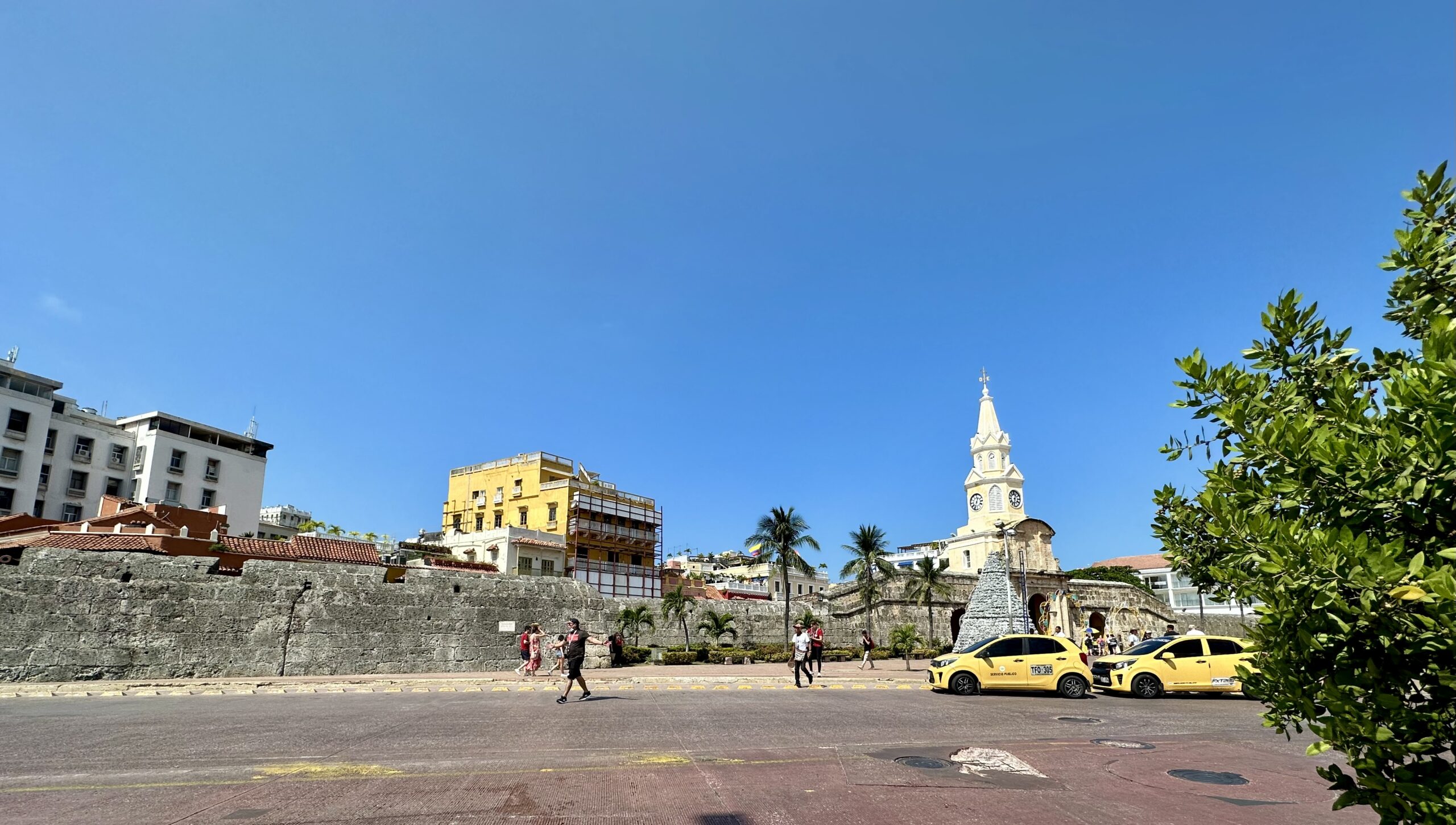
“The Bridge Gate was constructed in 1631 as Cartagena de Indias became a walled-in city. This main entrance has been damaged, restored and changed several times. Today’s version of this beautiful Gothic clock tower – designed by Luis Felipe Jaspe Franco – was finished in 1888. The 98.5 foot Torre del Reloj is a symbolic landmark of Cartagena.” – Encircle Photos
“This 19th century Puerta del Reloj (clock tower) — and symbol of the city — sits atop the main entryway to the Old Town’s walled enclosure.” – Frommer’s
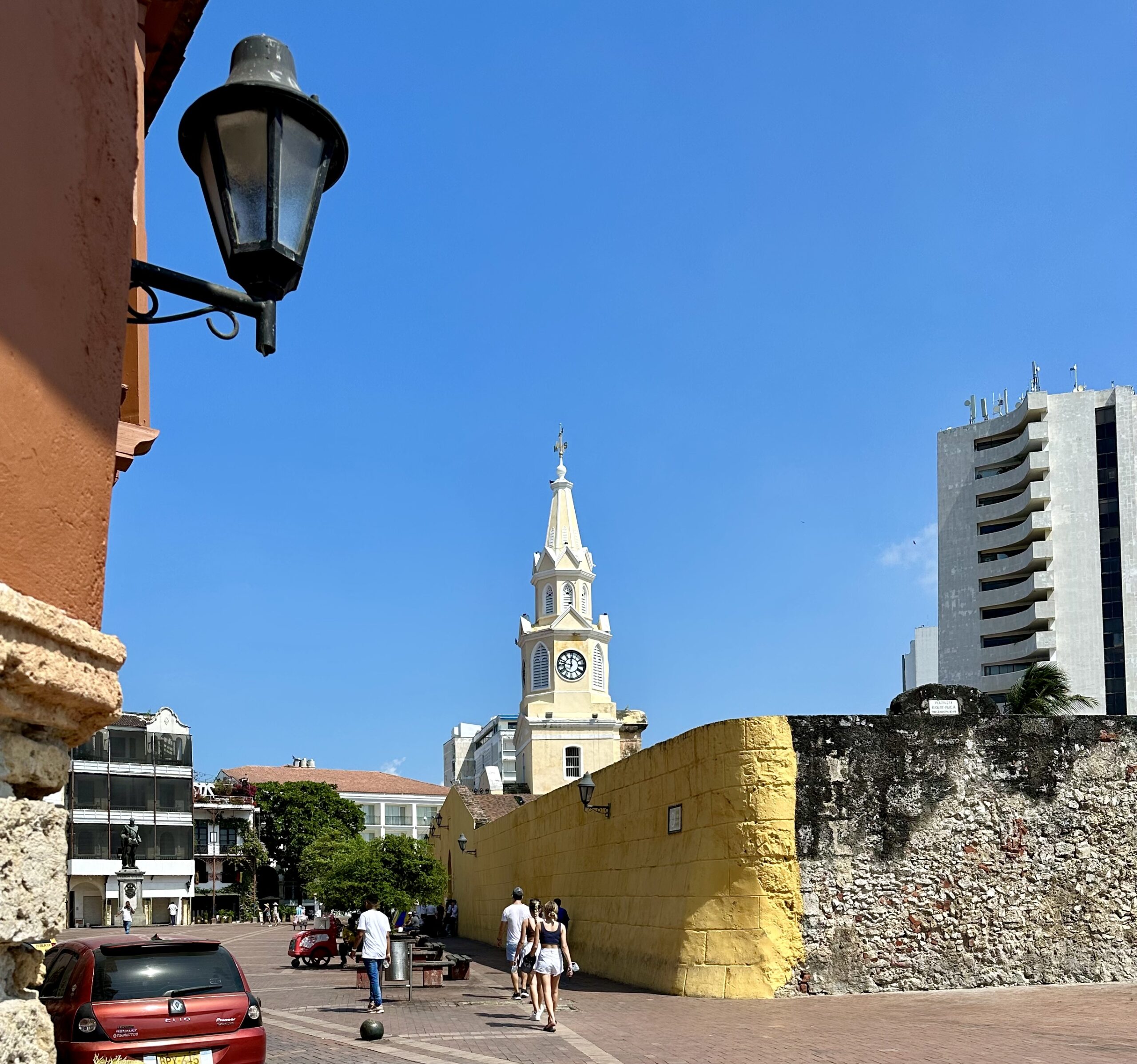
The walled city, “is the most preserved and complete fortification in South America, and one of the best walled cities in the world. It runs along the 11 kilometers of the walled cordon, one of the most important attractions of Cartagena, declared a World Cultural Heritage Site and an invaluable treasure that has resisted the attacks of invaders, time and nature…By the year 2020 the preserved Walls of Cartagena will be 406 years old.” – Columbia.travel/en
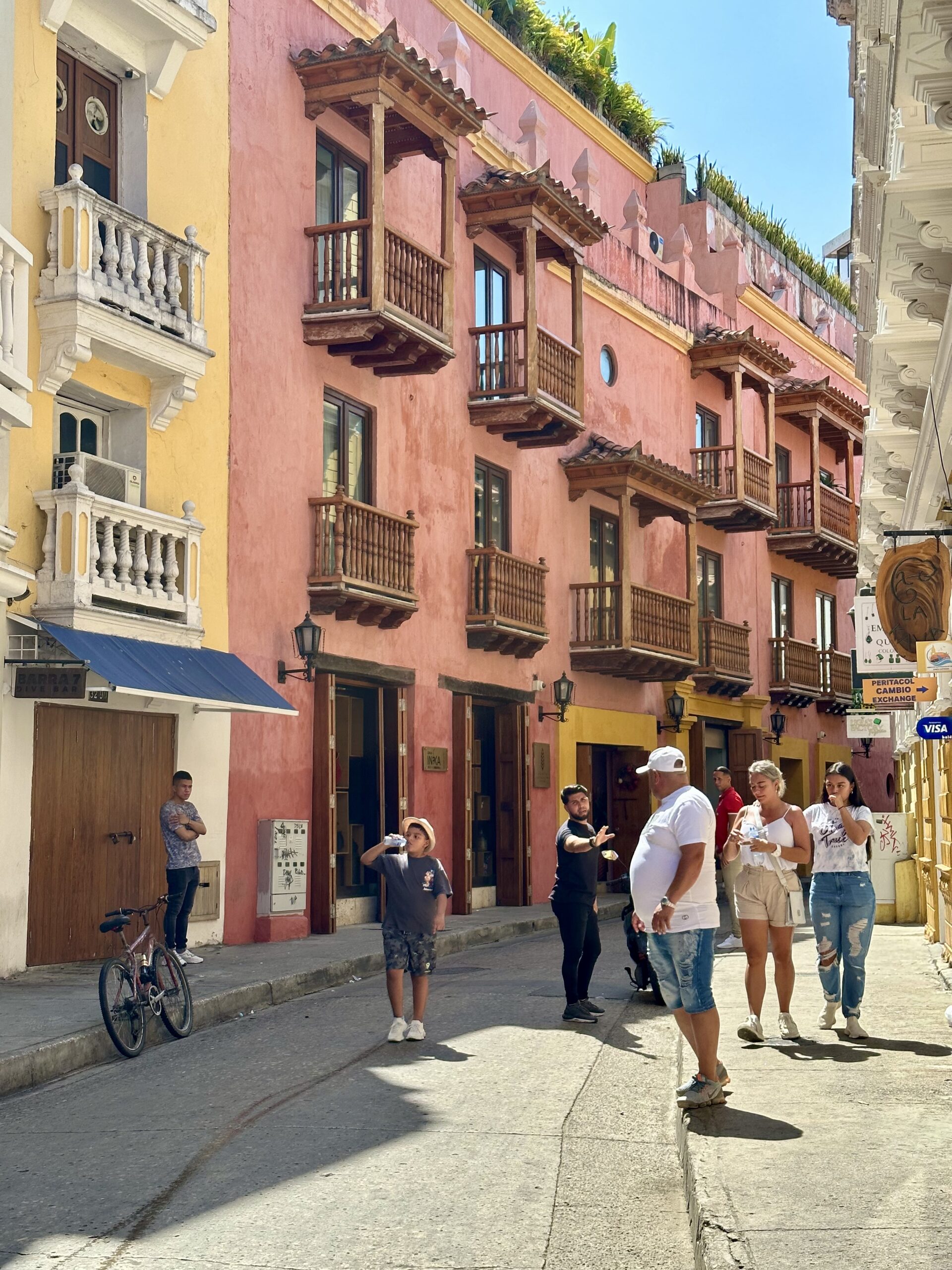
The walled city is a very compact part of Cartagena. It is best seen by walking around and enjoying the colorful Colonial buildings with their small overhanging balconies. The entire walled city was declared a UNESCO World Heritage Site.
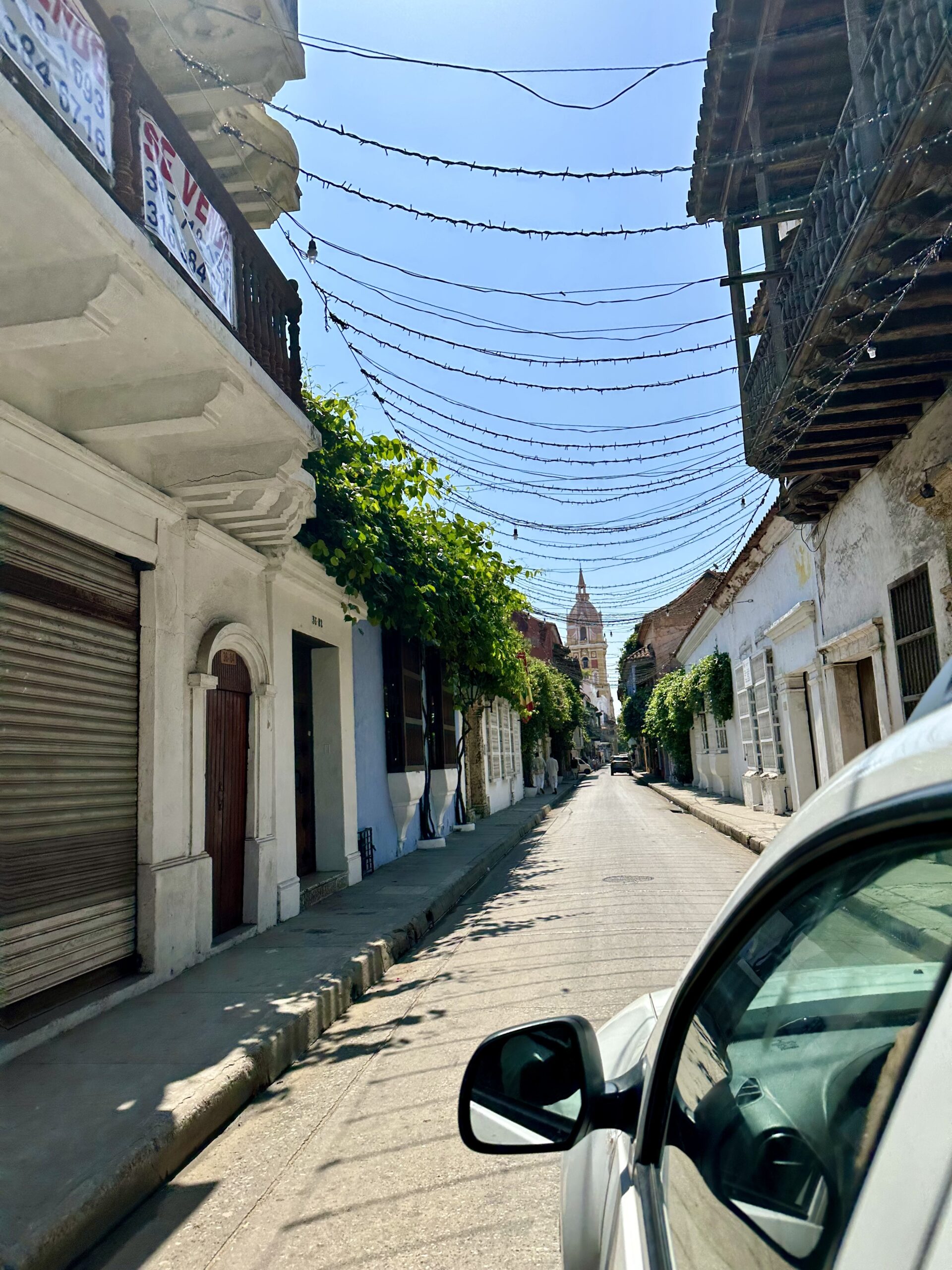
“This bronze statue of Pope John Paul II commemorates the papal visit in 1986. The pontiff came to Colombia to mourn the loss of over 23,000 victims. They died from a mudslide caused by the eruption of the Nevada del Ruiz volcano in the town of Armero.” – Encircle Photos
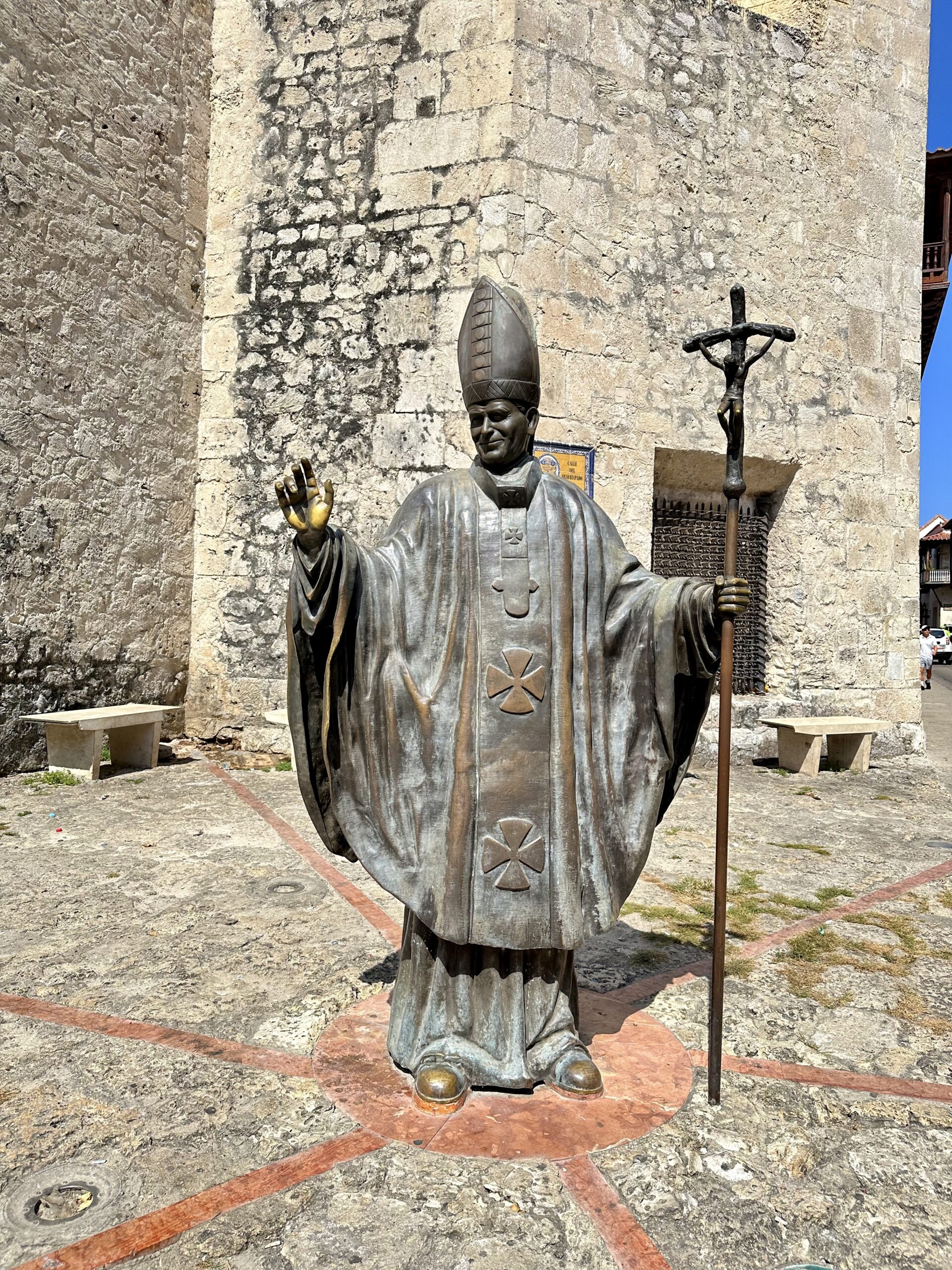
We found the Plaza de Bolivar to be bustling and full of so many people and pigeons. Here is what Lonely Planet had to say about it:
“Formerly the Plaza de Inquisición, this leafy and shaded plaza is surrounded by some of the city’s most elegant balconied colonial buildings. It’s one of Cartagena’s most alluring plazas and offers wonderful respite from the Caribbean heat. A statue of the eponymous Simón Bolívar stands in the middle of the square.”
It wasn’t quite the serene Plaza we expected.
On the south end of Plaza de Bolívar are a bunch of tiles with the faces of each Miss Colombia. This is called the Portal de las Reinas (Portal of the Queens).
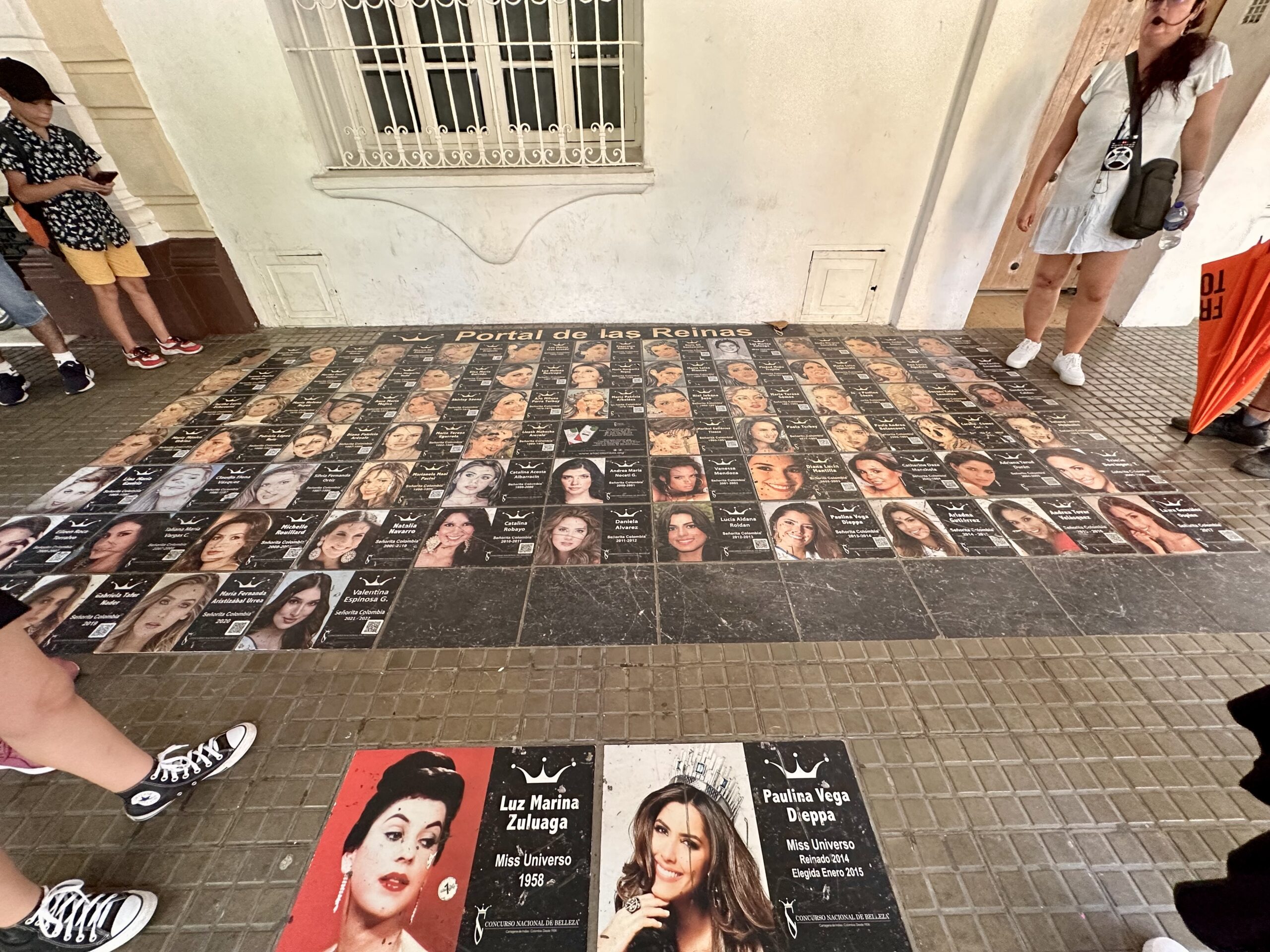
“Colombia, located in northern South America, is the country that mines and produces the most emeralds for the global market, as well as the most desirable. It is estimated that Colombia accounts for 70–90% of the world’s emerald market.” – Wikipedia
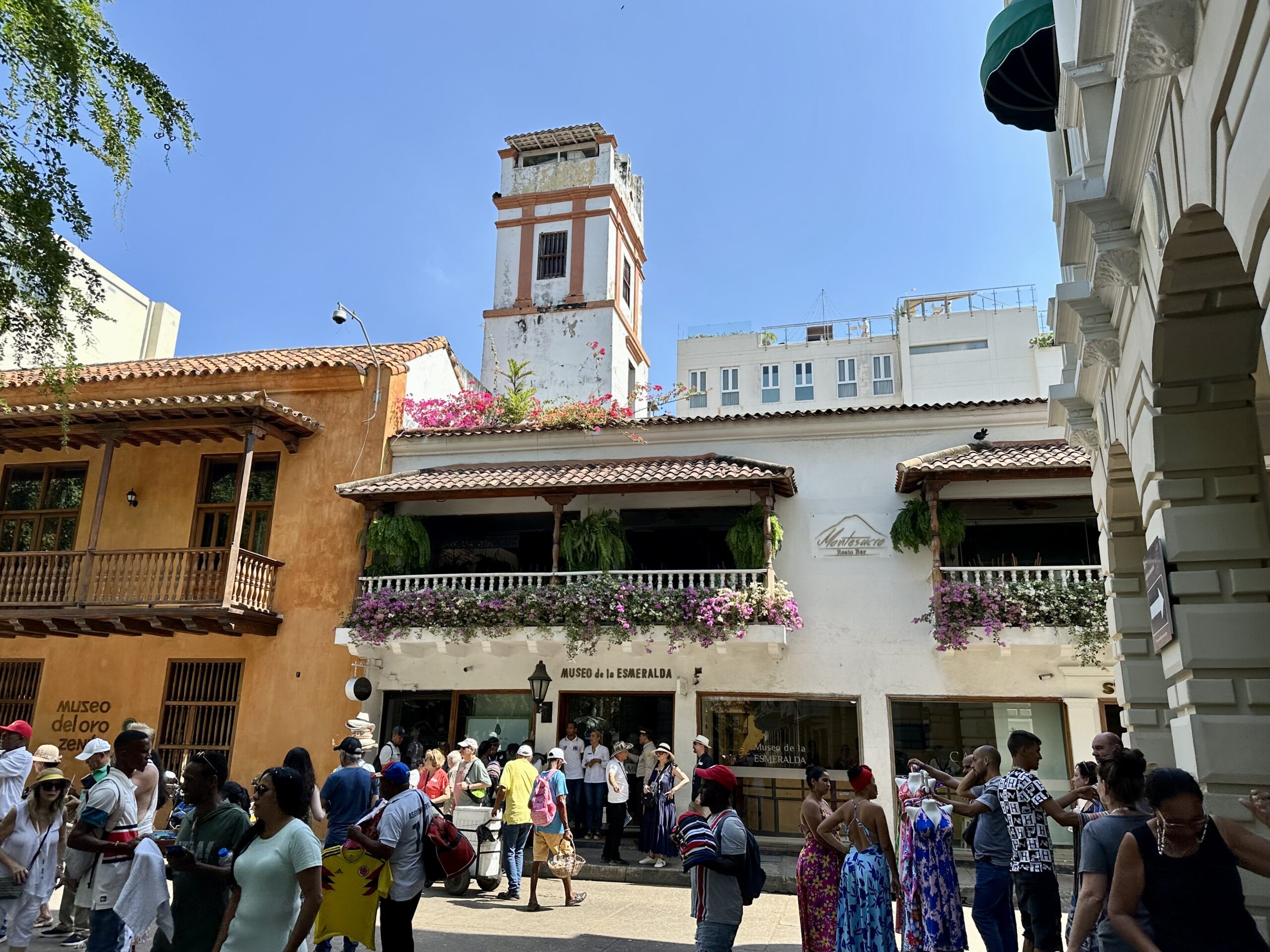
Our final stop of the day was to explore the neighborhood of Getsemaní. “Once a district characterized by crime, Getsemani, just south of the ancient walled fortress, has become “Cartagena’s hippest neighborhood and one of Latin America’s newest hotspots”, with plazas that were once the scene of drug dealing being reclaimed and old buildings being turned into boutique hotels.” – Wikipedia
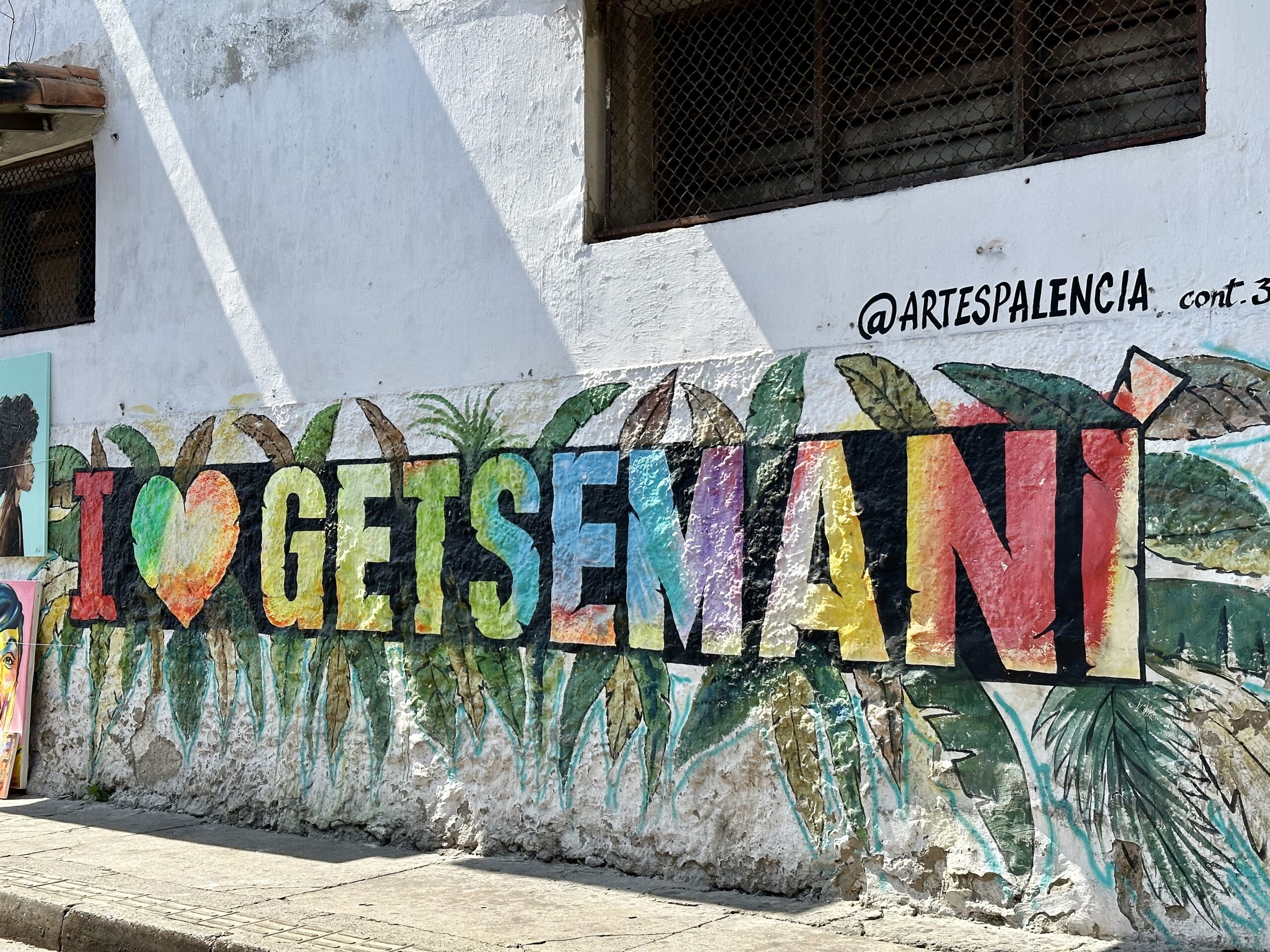
This was one of the most colorful neighborhoods we saw during our day in Cartagena. The bougainvillea grew up the sides of buildings, many of the sidewalks and even the streets were painted, and there were so many colorful decorations hanging between the buildings.
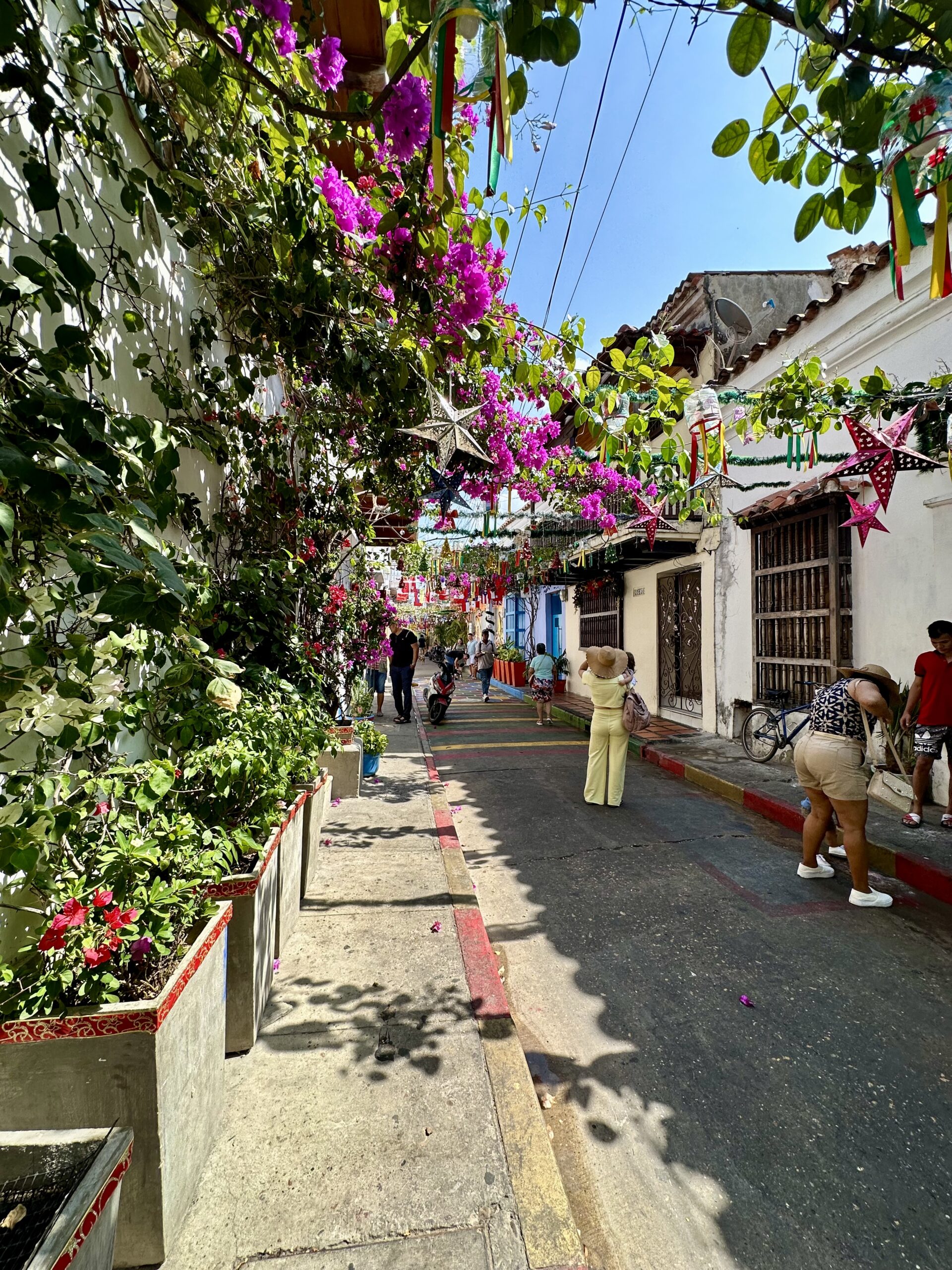
“The Getsemaní neighborhood in Cartagena is lined with colorful street murals created by both local and international artists.” – Culture Trip
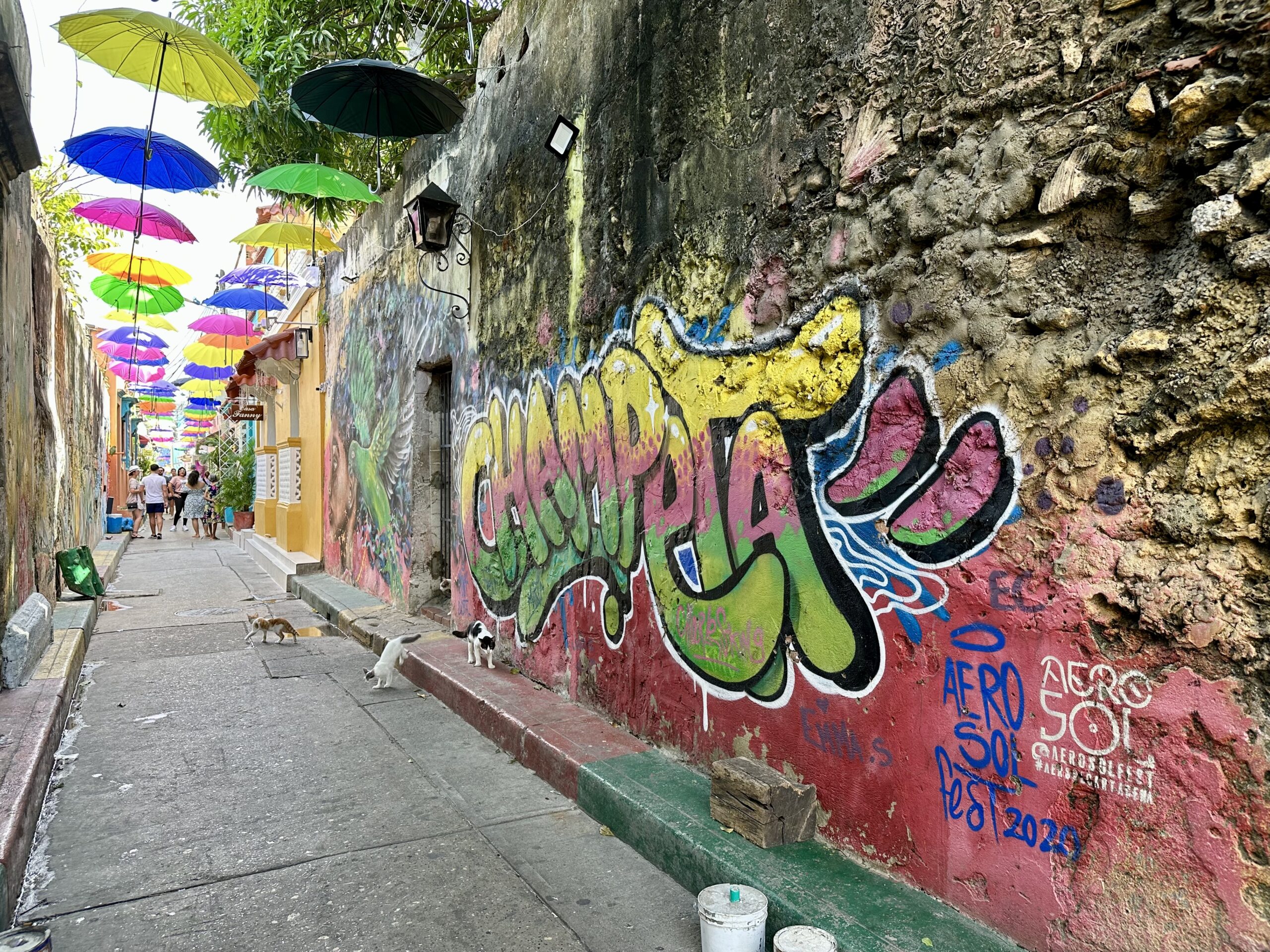
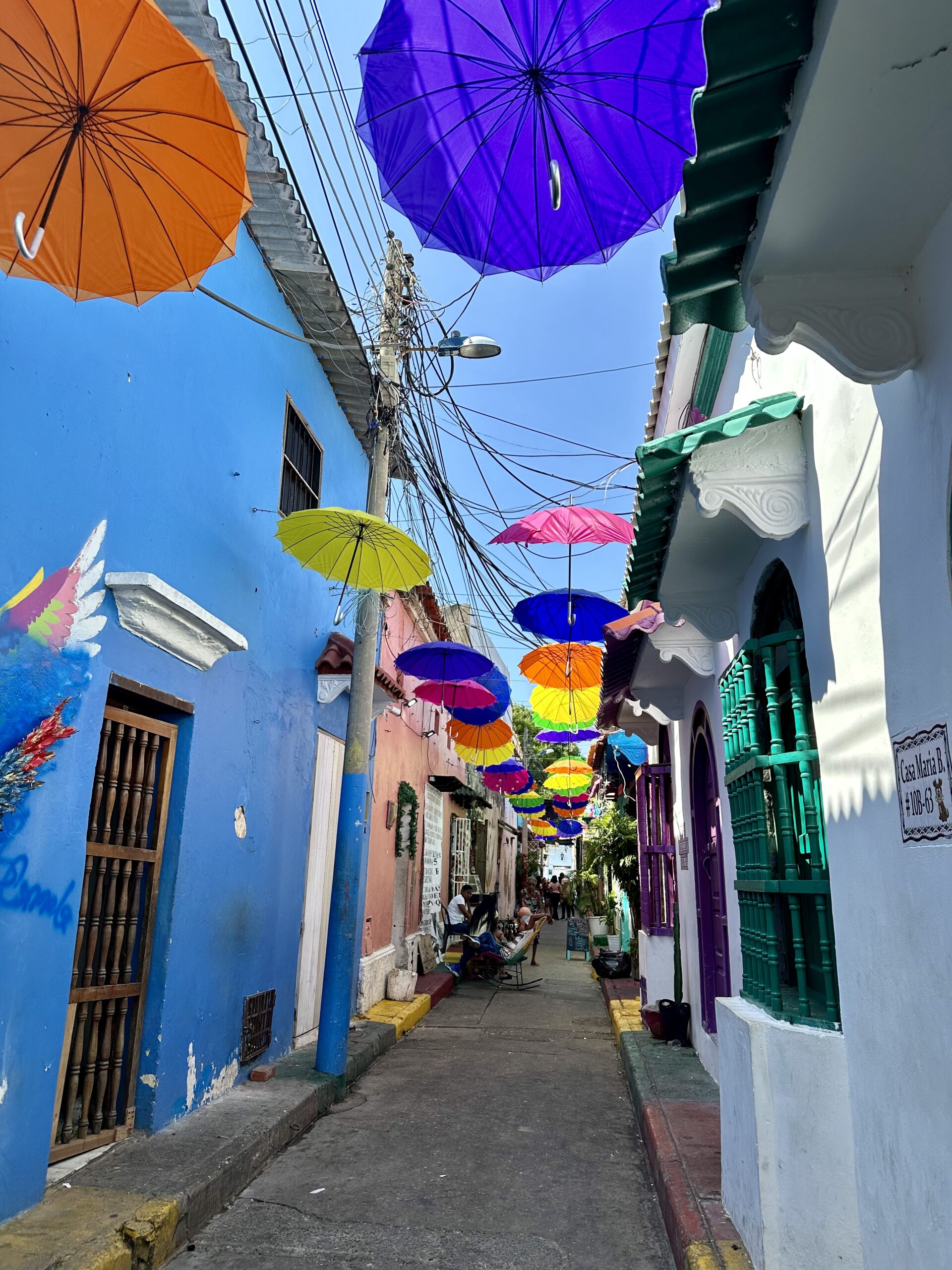
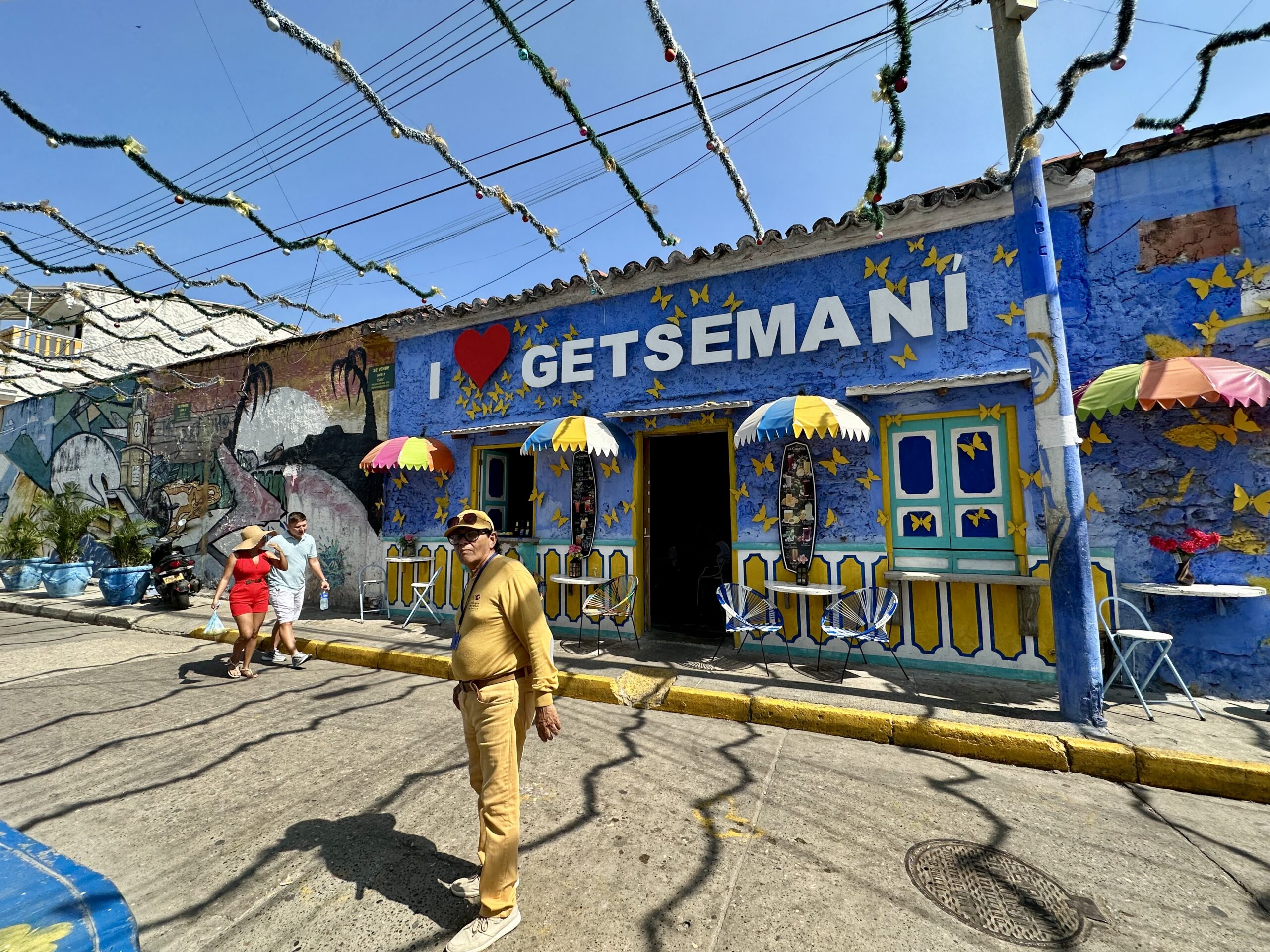
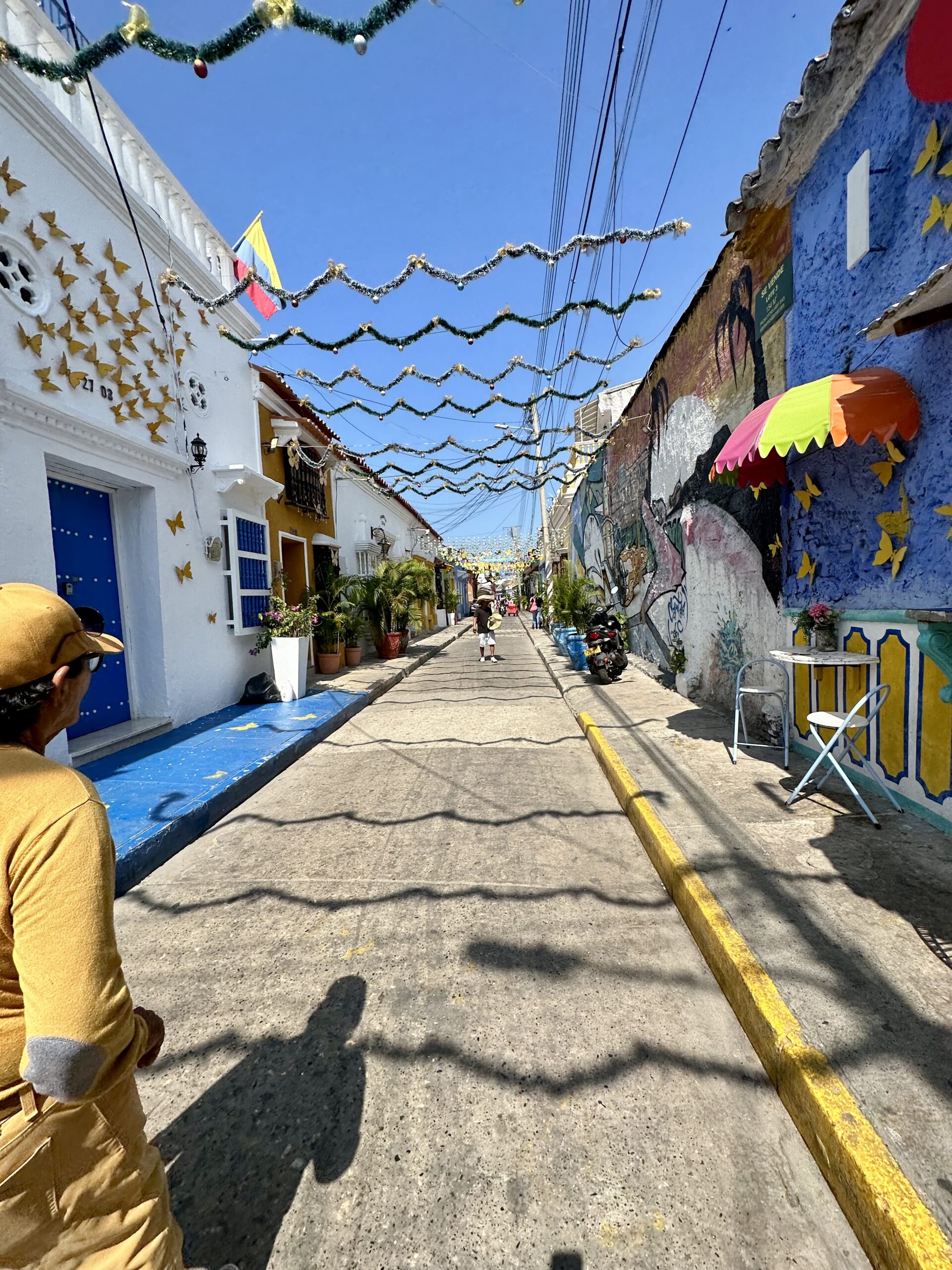
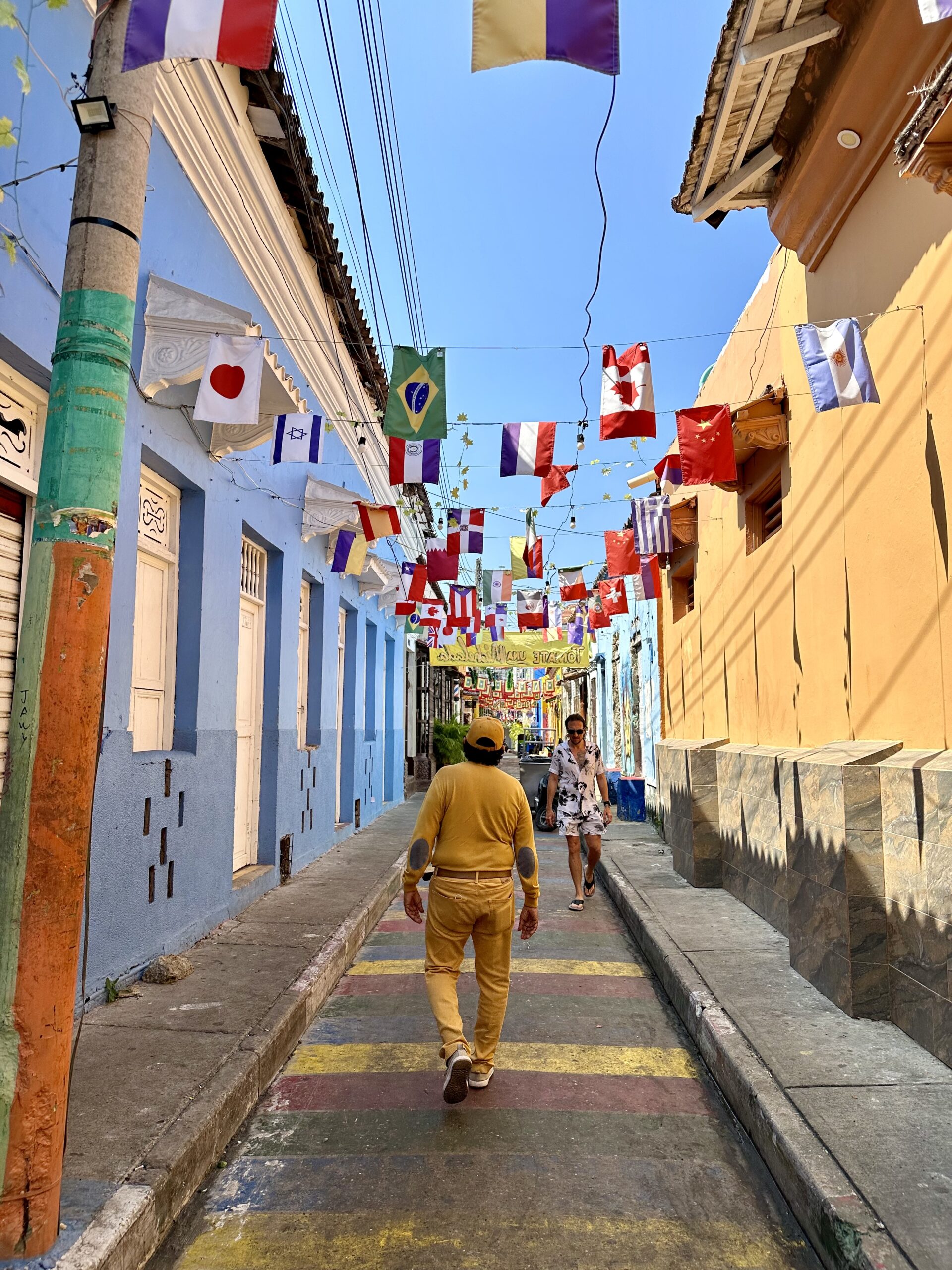
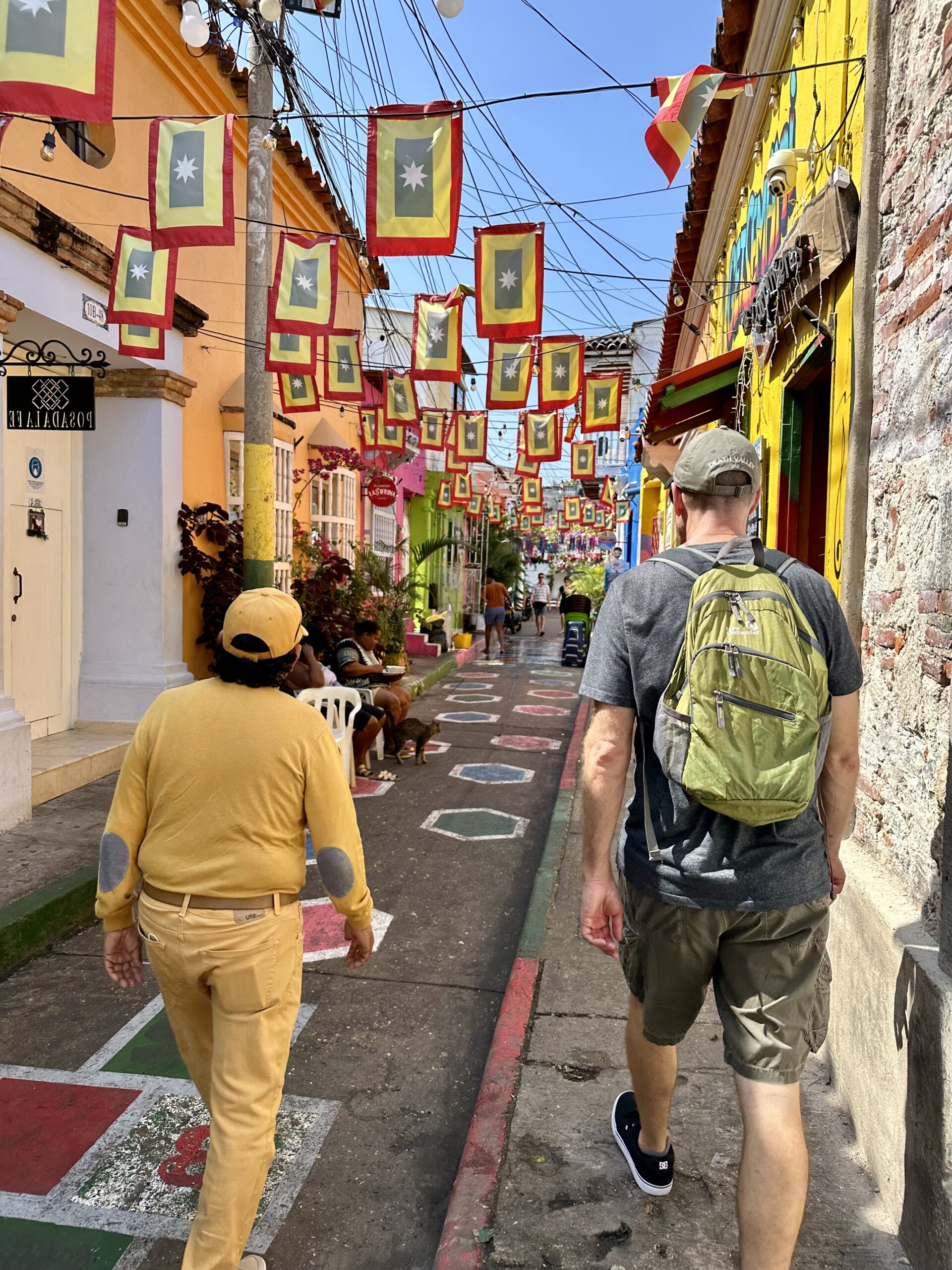
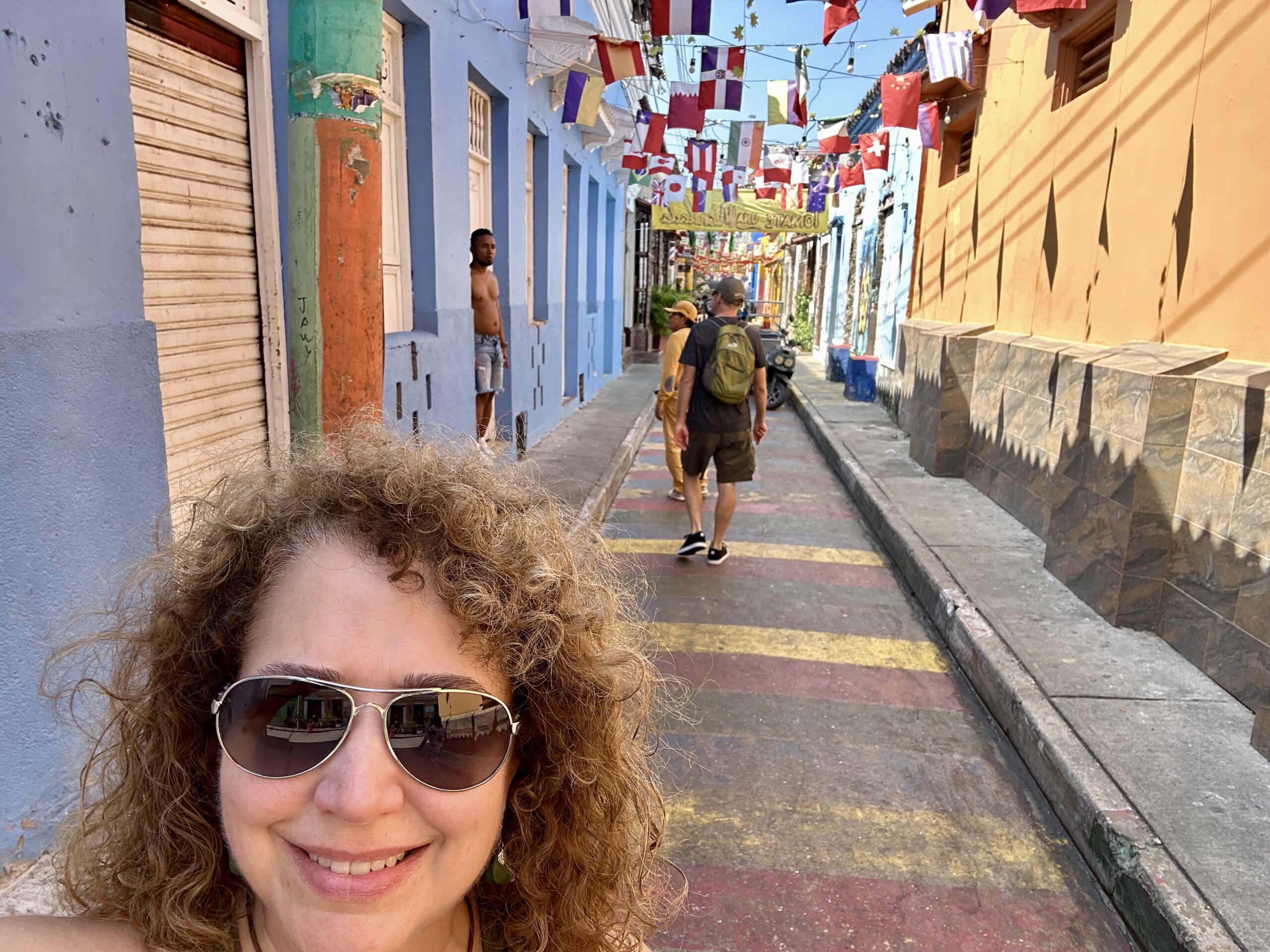
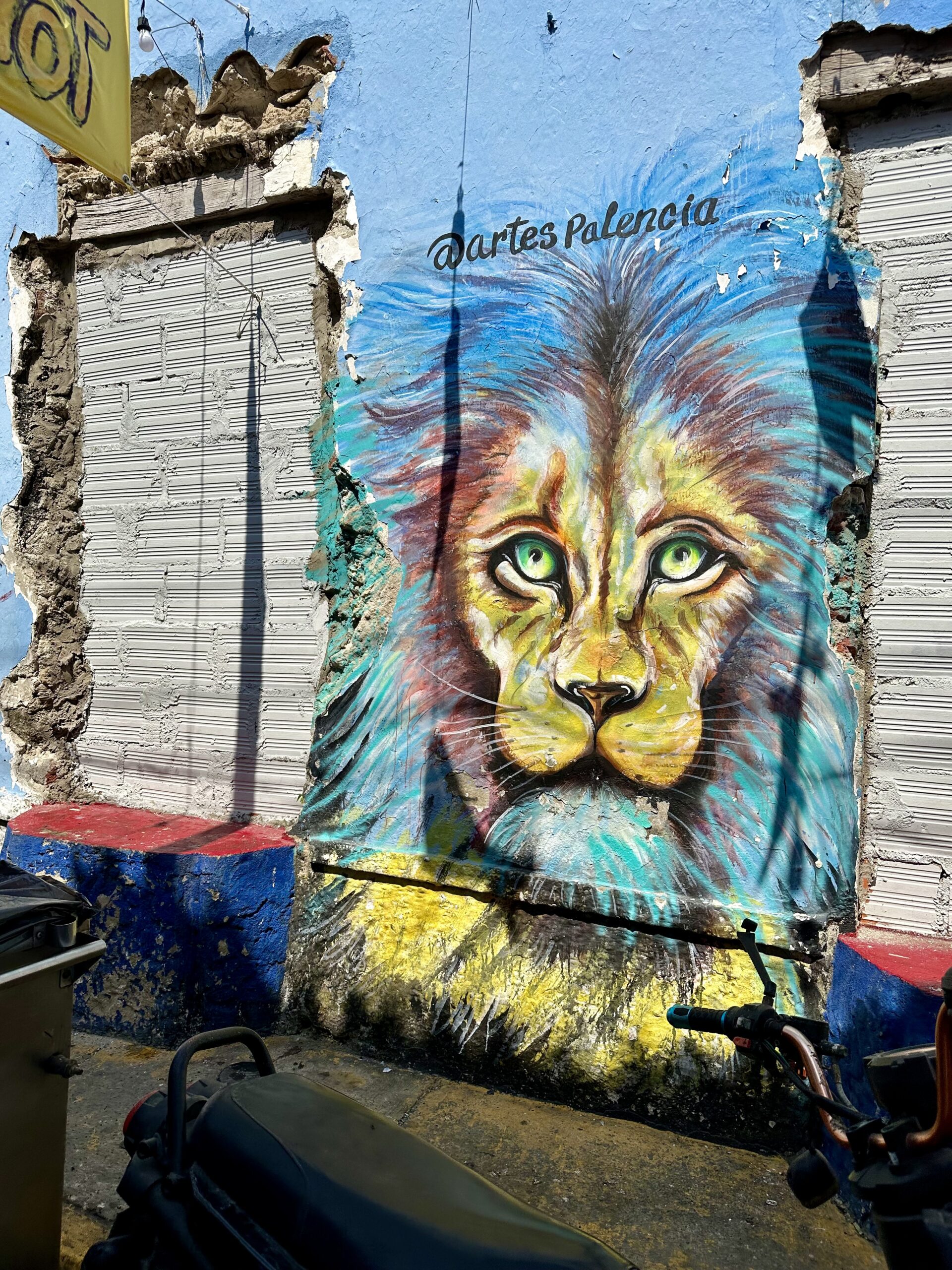
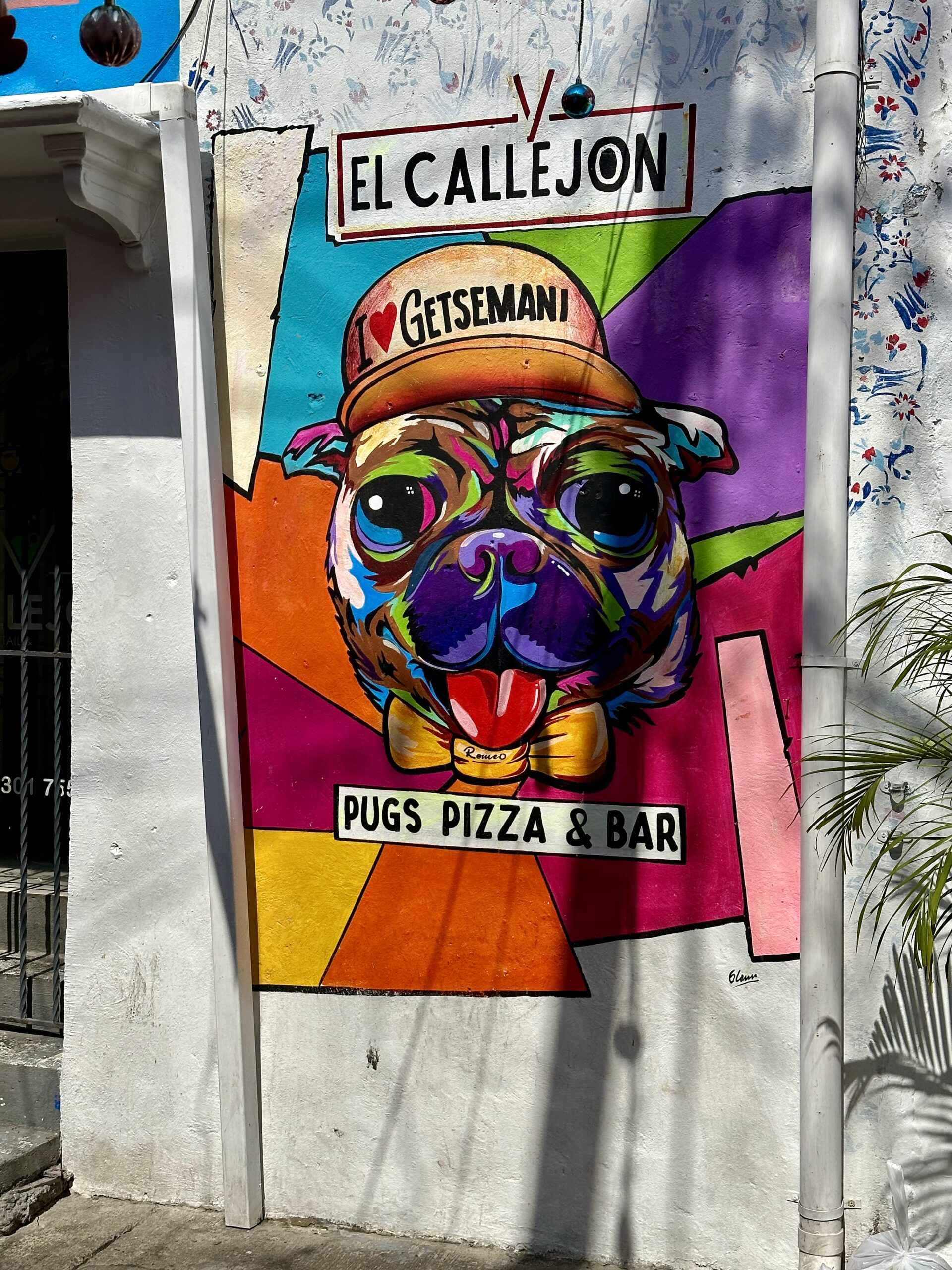
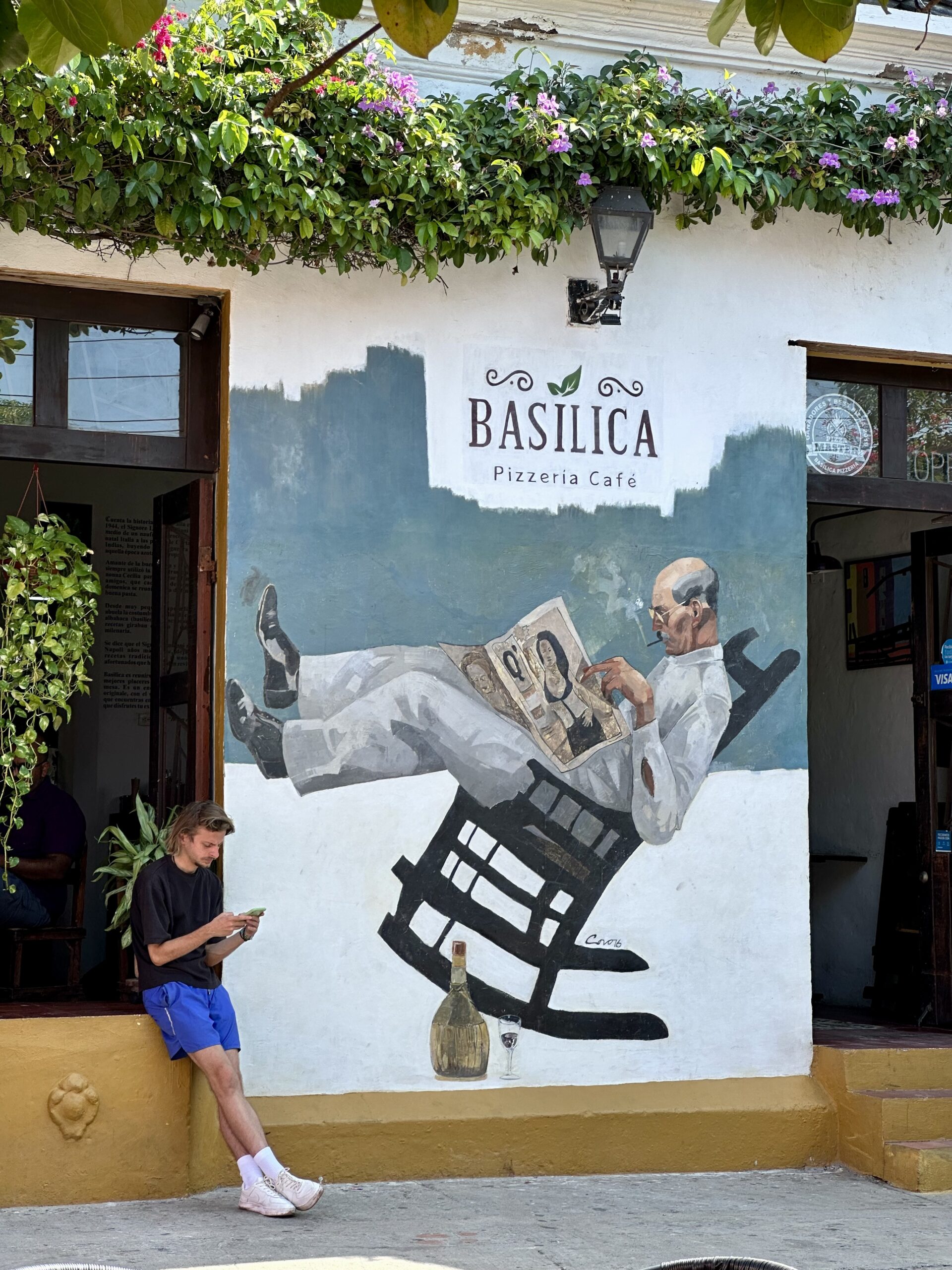
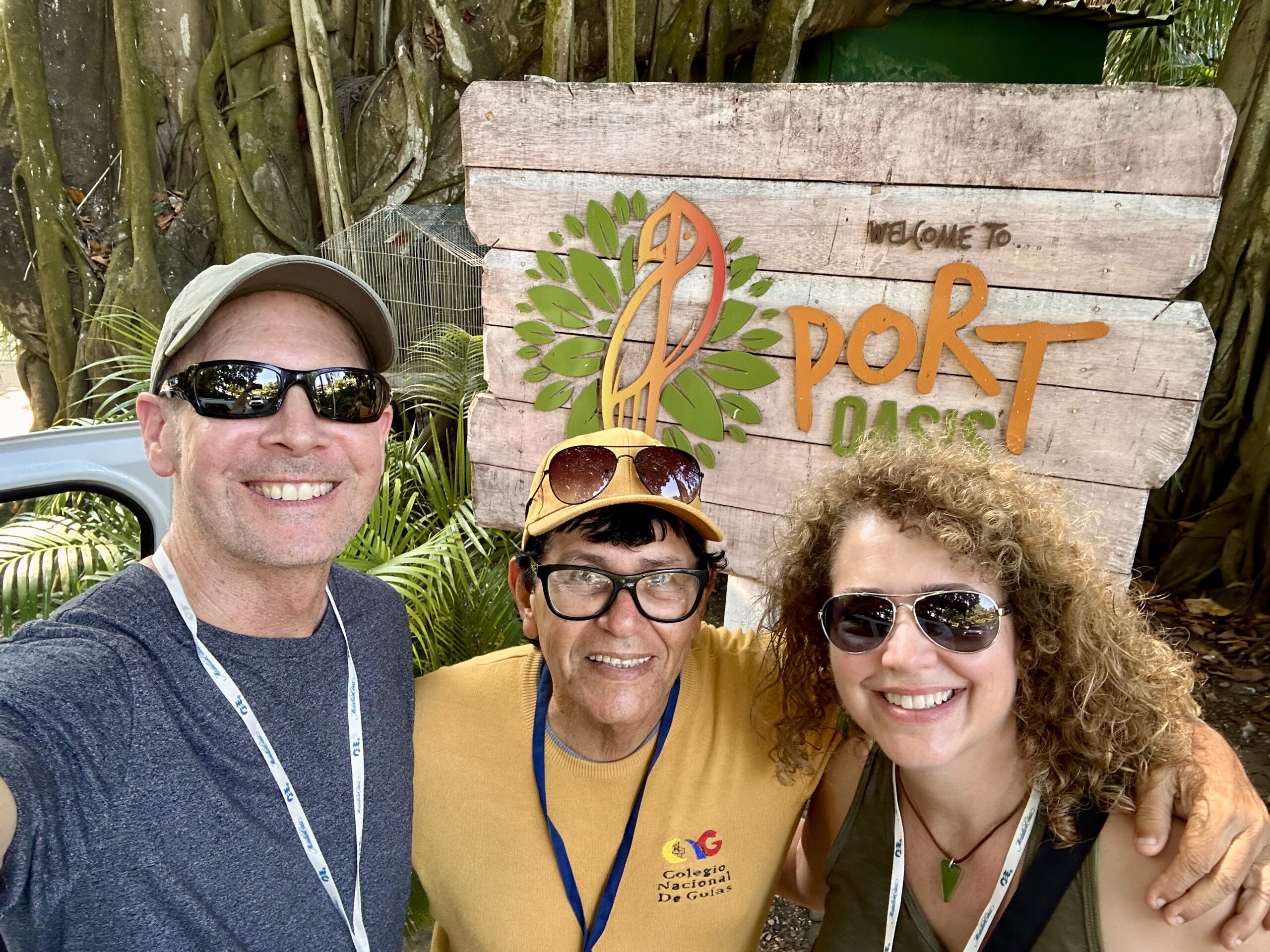
What a great start to the year!

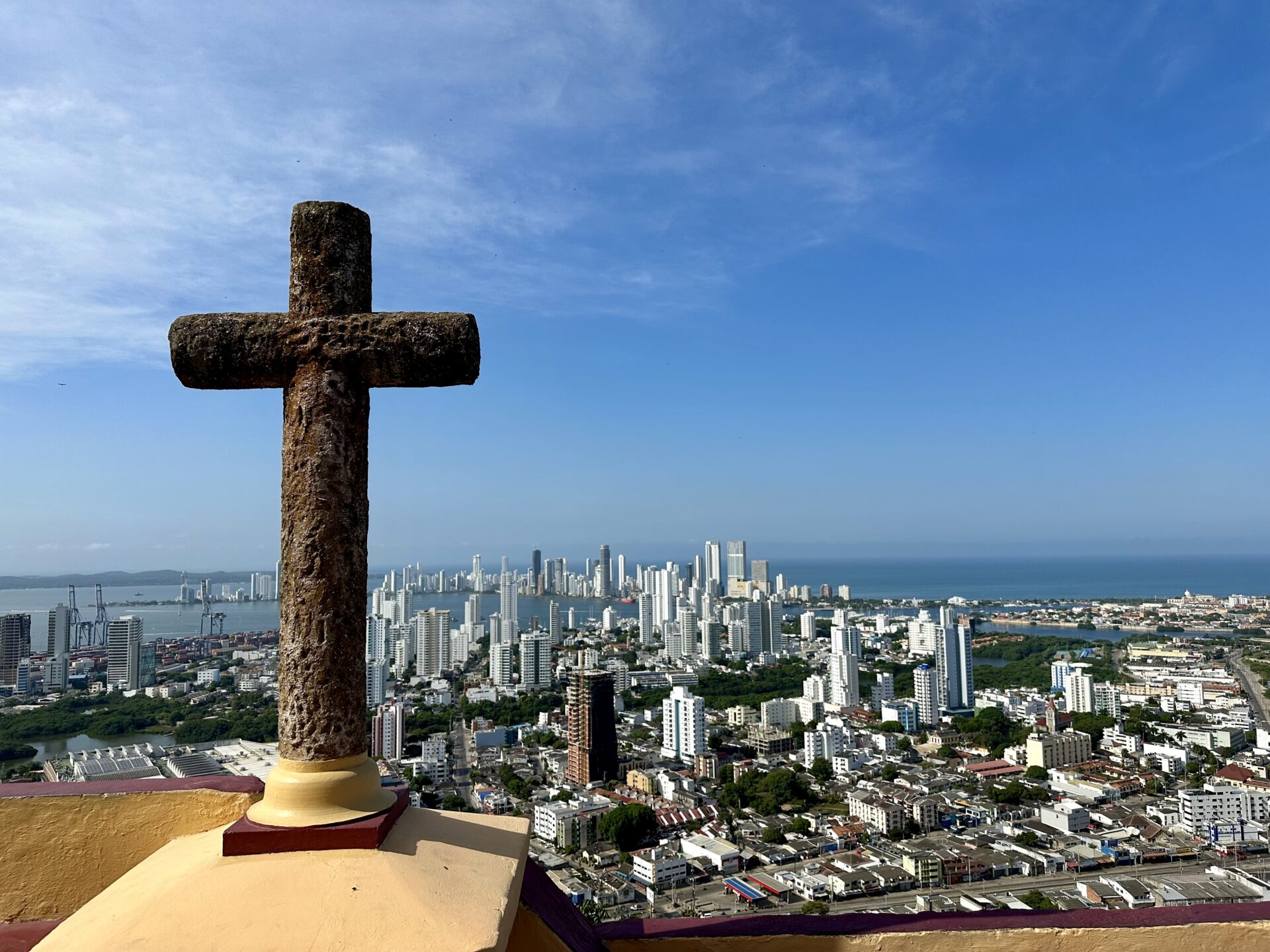
Hello Lovebirds of Cartagena!
What a Colorful, Vibrant and Interesting Culture to be immersed into. That is the Beauty of traveling to other countries and you definitely many interesting areas to see and enjoy. This is chapter 2 of your Panama Canal Cruise and I could feel how that excitement built up and anticipating the next one!!! Glad to know you had a good time in Colombia!
Hi Joel and Jeri,
Just loved the post on Cartagena! I have heard about the walled city and your post is timely as we leave for Colombia in about 2 weeks! One of our stops will now be the cruise ship terminal to see all the wildlife! Thanks, as always, for posting!